A Survey on Battery-Less RFID-Based Wireless Sensors
Abstract
1. Introduction
2. Individual Components of an RFID-Based Wireless Sensor System
2.1. Antenna
2.2. Rectifier
2.3. Digital Circuitry
2.4. Sensing Element
3. System Topologies
3.1. Chip-Less RFID Sensor Topology
3.2. Chip-Based RFID Sensor Topology
3.2.1. Chip-Based Antenna Resonance Topology
3.2.2. Chip-Based Multi-Port Topology
3.2.3. Chip-Based Digitally Integrated Topology
3.2.4. Chip-Based Ambient Energy-Harvesting Topology
3.3. Topology Summary
4. Implementation and Testing
4.1. Chip-Less RFID Sensor Implementation
Example of a Chip-Less RFID Humidity Sensor
4.2. Example of a Chip-Based Antenna Resonance
4.3. Example of a Multi-Port Chip-Based Battery-Less
4.4. Example of a Chip-Based Digitally Integrated
4.5. Example of Chip-Based Ambient Energy Harvesting
5. Future Directions
6. Conclusions
Author Contributions
Funding
Institutional Review Board Statement
Informed Consent Statement
Data Availability Statement
Acknowledgments
Conflicts of Interest
References
- Wollschlaeger, M.; Sauter, T.; Jasperneite, J. The future of industrial communication: Automation networks in the era of the internet of things and industry 4.0. IEEE Ind. Electron. Mag. 2017, 11, 17–27. [Google Scholar] [CrossRef]
- Sisinni, E.; Saifullah, A.; Han, S.; Jennehag, U.; Gidlund, M. Industrial internet of things: Challenges, opportunities, and directions. IEEE Trans. Ind. Inform. 2018, 14, 4724–4734. [Google Scholar] [CrossRef]
- Mc Gee, K.; Anandarajah, P.; Collins, D. Current Progress towards the Integration of Thermocouple and Chipless RFID Technologies and the Sensing of a Dynamic Stimulus. Micromachines 2020, 11, 1019. [Google Scholar] [CrossRef] [PubMed]
- Roberts, C.M. Radio frequency identification (RFID). Comput. Secur. 2006, 25, 18–26. [Google Scholar] [CrossRef]
- Landt, J. The history of RFID. IEEE Potentials 2005, 24, 8–11. [Google Scholar] [CrossRef]
- Hunt, V.D.; Puglia, A.; Puglia, M. RFID: A Guide to Radio Frequency Identification; John Wiley & Sons: Hoboken, NJ, USA, 2007. [Google Scholar]
- Want, R. Enabling ubiquitous sensing with RFID. Computer 2004, 37, 84–86. [Google Scholar] [CrossRef]
- Cook, B.S.; Vyas, R.; Kim, S.; Thai, T.; Le, T.; Traille, A.; Aubert, H.; Tentzeris, M.M. RFID-based sensors for zero-power autonomous wireless sensor networks. IEEE Sens. J. 2014, 14, 2419–2431. [Google Scholar] [CrossRef]
- Yang, L.; Rida, A.; Tentzeris, M.M. Design and development of radio frequency identification (RFID) and RFID-enabled sensors on flexible low cost substrates. Synth. Lect. RF/Microw. 2009, 1, 1–89. [Google Scholar] [CrossRef][Green Version]
- Akbari, S. Energy harvesting for wireless sensor networks review. In Proceedings of the 2014 Federated Conference on Computer Science and Information Systems, Warsaw, Poland, 7–10 September 2014; Volume 2, pp. 987–992. [Google Scholar] [CrossRef]
- Muratkar, T.S.; Bhurane, A.; Kothari, A. Battery-less internet of things—A survey. Comput. Netw. 2020, 180, 107385. [Google Scholar] [CrossRef]
- Kim, S.; Mariotti, C.; Alimenti, F.; Mezzanotte, P.; Georgiadis, A.; Collado, A.; Roselli, L.; Tentzeris, M.M. No Battery Required: Perpetual RFID-Enabled Wireless Sensors for Cognitive Intelligence Applications. IEEE Microw. Mag. 2013, 14, 66–77. [Google Scholar] [CrossRef]
- Węglarski, M.; Jankowski-Mihułowicz, P. Factors affecting the synthesis of autonomous sensors with RFID interface. Sensors 2019, 19, 4392. [Google Scholar] [CrossRef] [PubMed]
- Zhang, J.; Tian, G.Y.; Marindra, A.M.; Sunny, A.I.; Zhao, A.B. A review of passive RFID tag antenna-based sensors and systems for structural health monitoring applications. Sensors 2017, 17, 265. [Google Scholar] [CrossRef]
- Marrocco, G.; Amato, F. Self-sensing passive RFID: From theory to tag design and experimentation. In Proceedings of the 2009 European Microwave Conference (EuMC), Rome, Italy, 29 September–1 October 2009; pp. 1–4. [Google Scholar]
- Ferdous, R.M.; Reza, A.W.; Siddiqui, M.F. Renewable energy harvesting for wireless sensors using passive RFID tag technology: A review. Renew. Sustain. Energy Rev. 2016, 58, 1114–1128. [Google Scholar] [CrossRef]
- Ma, S.; Pournoori, N.; Sydänheimo, L.; Ukkonen, L.; Björninen, T.; Georgiadis, A. A Batteryless Semi-Passive RFID Sensor Platform. In Proceedings of the 2019 IEEE International Conference on RFID Technology and Applications (RFID-TA), Pisa, Italy, 25–27 September 2019; pp. 171–173. [Google Scholar]
- Rida, A.; Yang, L.; Tentzeris, M.M. RFID-Enabled Sensor Design and Applications; Artech House: Norwood, MA, USA, 2010. [Google Scholar]
- Merenda, M.; Felini, C.; Della Corte, F.G. Battery-less smart RFID tag with sensor capabilities. In Proceedings of the 2012 IEEE International Conference on RFID-Technologies and Applications (RFID-TA), Nice, France, 5–7 November 2012; pp. 160–164. [Google Scholar]
- Kantareddy, S.N.R.; Mathews, I.; Bhattacharyya, R.; Peters, I.M.; Buonassisi, T.; Sarma, S.E. Long range battery-less PV-powered RFID tag sensors. IEEE Internet Things J. 2019, 6, 6989–6996. [Google Scholar] [CrossRef]
- Zhang, J.; Periaswamy, S.C.; Mao, S.; Patton, J. Standards for passive UHF RFID. GetMobile Mob. Comput. Commun. 2020, 23, 10–15. [Google Scholar] [CrossRef]
- Yi, X.; Wu, T.; Wang, Y.; Leon, R.T.; Tentzeris, M.M.; Lantza, G. Passive wireless smart-skin sensor using RFID-based folded patch antennas. Int. J. Smart Nano Mater. 2011, 2, 22–38. [Google Scholar] [CrossRef]
- Opasjumruskit, K.; Thanthipwan, T.; Sathusen, O.; Sirinamarattana, P.; Gadmanee, P.; Pootarapan, E.; Wongkomet, N.; Thanachayanont, A.; Thamsirianunt, M. Self-powered wireless temperature sensors exploit RFID technology. IEEE Pervasive Comput. 2006, 5, 54–61. [Google Scholar] [CrossRef]
- Vaz, A.; Ubarretxena, A.; Zalbide, I.; Pardo, D.; Solar, H.; Garcia-Alonso, A.; Berenguer, R. Full passive UHF tag with a temperature sensor suitable for human body temperature monitoring. IEEE Trans. Circuits Syst. II Express Briefs 2010, 57, 95–99. [Google Scholar] [CrossRef]
- Wickramasinghe, A.; Ranasinghe, D.C. Ambulatory monitoring using passive computational RFID sensors. IEEE Sens. J. 2015, 15, 5859–5869. [Google Scholar] [CrossRef]
- Manzari, S.; Catini, A.; Pomarico, G.; Di Natale, C.; Marrocco, G. Development of an UHF RFID chemical sensor array for battery-less ambient sensing. IEEE Sens. J. 2014, 14, 3616–3623. [Google Scholar] [CrossRef]
- Caccami, M.; Mulla, M.; Occhiuzzi, C.; Di Natale, C.; Marrocco, G. Design and experimentation of a batteryless on-skin RFID graphene-oxide sensor for the monitoring and discrimination of breath anomalies. IEEE Sens. J. 2018, 18, 8893–8901. [Google Scholar] [CrossRef]
- Boaventura, A.J.S.; Carvalho, N.B. A batteryless RFID remote control system. IEEE Trans. Microw. Theory Tech. 2013, 61, 2727–2736. [Google Scholar] [CrossRef]
- Karmakar, N.C. Handbook of Smart Antennas for RFID Systems; John Wiley & Sons: Hoboken, NJ, USA, 2011. [Google Scholar]
- Thai, T.T.; Aubert, H.; Pons, P.; Tentzeris, M.M.; Plana, R. Design of a highly sensitive wireless passive RF strain transducer. In Proceedings of the 2011 IEEE MTT-S International Microwave Symposium, Baltimore, MD, USA, 5–10 June 2011; pp. 1–4. [Google Scholar]
- Cook, B.S.; Shamim, A.; Tentzeris, M. Passive low-cost inkjet-printed smart skin sensor for structural health monitoring. IET Microw. Antennas Propag. 2012, 6, 1536–1541. [Google Scholar] [CrossRef]
- Aubert, H.; Chebila, F.; Jatlaoui, M.; Thai, T.; Hallil, H.; Traille, A.; Bouaziz, S.; Rifai, A.; Pons, P.; Menini, P.; et al. Wireless sensing and identification of passive electromagnetic sensors based on millimetre-wave FMCW RADAR. In Proceedings of the 2012 IEEE International Conference on Rfid-Technologies and Applications (Rfid-Ta), Nice, France, 5–7 November 2012; pp. 398–403. [Google Scholar]
- Vyas, R.; Lakafosis, V.; Lee, H.; Shaker, G.; Yang, L.; Orecchini, G.; Traille, A.; Tentzeris, M.M.; Roselli, L. Inkjet printed, self powered, wireless sensors for environmental, gas, and authentication-based sensing. IEEE Sens. J. 2011, 11, 3139–3152. [Google Scholar] [CrossRef]
- Potyrailo, R.A.; Nagraj, N.; Tang, Z.; Mondello, F.J.; Surman, C.; Morris, W. Battery-free radio frequency identification (RFID) sensors for food quality and safety. J. Agric. Food Chem. 2012, 60, 8535–8543. [Google Scholar] [CrossRef] [PubMed]
- Zhang, C.; Huang, J.; Huang, Q. A passive wireless graphene oxide based humidity sensor and associated portable telemetry unit. In Proceedings of the 2013 Transducers & Eurosensors XXVII: The 17th International Conference on Solid-State Sensors, Actuators and Microsystems (TRANSDUCERS & EUROSENSORS XXVII), Barcelona, Spain, 16–20 June 2013; pp. 278–281. [Google Scholar]
- Honari, M.M.; Saghlatoon, H.; Mirzavand, R.; Mousavi, P. An RFID sensor for early expiry detection of packaged foods. In Proceedings of the 2018 18th International Symposium on Antenna Technology and Applied Electromagnetics (ANTEM), Waterloo, ON, Canada, 19–22 August 2018; pp. 1–2. [Google Scholar]
- Saghlatoon, H.; Mirzavand, R.; Honari, M.M.; Mousavi, P. Sensor antenna transmitter system for material detection in wireless-sensor-node applications. IEEE Sens. J. 2018, 18, 8812–8819. [Google Scholar] [CrossRef]
- Saghlatoon, H.; Mirzavand, R.; Mousavi, P. Fixed-frequency low-loss dielectric material sensing transmitter. IEEE Trans. Ind. Electron. 2020, 68, 3517–3526. [Google Scholar] [CrossRef]
- Khalid, N.; Mirzavand, R.; Saghlatoon, H.; Honari, M.M.; Mousavi, P. A Three-Port Zero-Power RFID Sensor Architecture for IoT Applications. IEEE Access 2020, 8, 66888–66897. [Google Scholar] [CrossRef]
- Khalid, N.; Mirzavand, R.; Saghlatoon, H.; Honari, M.M.; Mousavi, P. Three-Port Zero-Power RFID Flood Sensor for IoT Applications. In Proceedings of the 2020 IEEE Wireless Power Transfer Conference (WPTC), Seoul, Korea, 15–19 November 2020; pp. 61–64. [Google Scholar] [CrossRef]
- Khalid, N.; Mirzavand, R.; Saghlatoon, H.; Honari, M.M.; Mousavi, P. A Three-Port Zero-Power RFID Wireless Sensor for IoT Applications. In Proceedings of the 2020 IEEE International Symposium on Antennas and Propagation and North American Radio Science Meeting (AP-S CNC/USNC-URSI), Montreal, QC, Canada, 5–10 July 2020; pp. 1–2. [Google Scholar]
- Fernández-Salmerón, J.; Rivadeneyra, A.; Martínez-Martí, F.; Capitán-Vallvey, L.F.; Palma, A.J.; Carvajal, M.A. Passive UHF RFID tag with multiple sensing capabilities. Sensors 2015, 15, 26769–26782. [Google Scholar] [CrossRef]
- Kapucu, K.; Dehollain, C. A passive UHF RFID system with a low-power capacitive sensor interface. In Proceedings of the 2014 IEEE RFID Technology and Applications Conference (RFID-TA), Tampere, Finland, 8–9 September 2014; pp. 301–305. [Google Scholar]
- Usami, R.; Komiyama, T.; Chonan, Y.; Yamaguchi, H.; Kotani, K. Photovoltaic-assisted self-Vth-cancellation CMOS rectifier for synergistic RF energy harvesting. IEICE Electron. Express 2020, 17, 1–6. [Google Scholar] [CrossRef]
- Vyas, R.J.; Cook, B.B.; Kawahara, Y.; Tentzeris, M.M. E-WEHP: A batteryless embedded sensor-platform wirelessly powered from ambient digital-TV signals. IEEE Trans. Microw. Theory Tech. 2013, 61, 2491–2505. [Google Scholar] [CrossRef]
- Sample, A.; Smith, J.R. Experimental results with two wireless power transfer systems. In Proceedings of the 2009 IEEE Radio and Wireless Symposium, San Diego, CA, USA, 18–22 January 2009; pp. 16–18. [Google Scholar]
- Dolgov, A.; Zane, R.; Popovic, Z. Power management system for online low power RF energy harvesting optimization. IEEE Trans. Circuits Syst. I Regul. Pap. 2010, 57, 1802–1811. [Google Scholar] [CrossRef]
- Farsense. Passive RFID Technology. Available online: http://www.farsens.com/en/2013/10/18/basic-guide-developing-rfid-sensor-solutions/ (accessed on 11 July 2021).
- Sparkfun. UHF RFID Tag (Set of 5). Available online: https://www.sparkfun.com/products/14147 (accessed on 11 July 2021).
- Węglarski, M.; Jankowski-Mihułowicz, P.; Chamera, M.; Dziedzic, J.; Kwaśnicki, P. Designing Antennas for RFID Sensors in Monitoring Parameters of Photovoltaic Panels. Micromachines 2020, 11, 420. [Google Scholar] [CrossRef] [PubMed]
- Chen, Z.N.; Qing, X. Antennas for RFID applications. In Final Program and Book of Abstracts—iWAT 2010: 2010 International Workshop on Antenna Technology: Small Antennas, Innovative Structures and Materials; IEEE: Lisbon, Portugal, 2010; pp. 13–16. [Google Scholar] [CrossRef]
- Marrocco, G.; Fonte, A.; Bardati, F. Evolutionary design of miniaturized meander-line antennas for RFID applications. In Proceedings of the IEEE Antennas and Propagation Society International Symposium (IEEE Cat. No.02CH37313), San Antonio, TX, USA, 16–21 June 2002; Volume 2, pp. 362–365. [Google Scholar] [CrossRef]
- Marrocco, G. Gain-optimized self-resonant meander line antennas for RFID applications. IEEE Antennas Wirel. Propag. Lett. 2003, 2, 302–305. [Google Scholar] [CrossRef]
- Çiftçi, T.; Karaosmanoǧlu, B.; Ergül. Low-cost inkjet antennas for RFID applications. IOP Conf. Ser. Mater. Sci. Eng. 2016, 120. [Google Scholar] [CrossRef]
- Marrocco, G. The art of UHF RFID antenna design: Impedance-matching and size-reduction techniques. IEEE Antennas Propag. Mag. 2008, 50, 66–79. [Google Scholar] [CrossRef]
- Švanda, M.; Polívka, M. Horizontal five-arm folded dipole over metal screening plane for UHF RFID of dielectric objects. Microw. Opt. Technol. Lett. 2010, 52, 2291–2294. [Google Scholar] [CrossRef]
- Baumbauer, C.L.; Anderson, M.G.; Ting, J.; Sreekumar, A.; Rabaey, J.M.; Arias, A.C.; Thielens, A. Printed, flexible, compact UHF-RFID sensor tags enabled by hybrid electronics. Sci. Rep. 2020, 10, 1–12. [Google Scholar] [CrossRef] [PubMed]
- Chen, H.D.; Tsao, Y.H. Low-profile meandered patch antennas for RFID tags mountable on metallic objects. IEEE Antennas Wirel. Propag. Lett. 2010, 9, 118–121. [Google Scholar] [CrossRef]
- Genovesi, S.; Monorchio, A. Low-profile three-arm folded dipole antenna for UHF band RFID tags mountable on metallic objects. IEEE Antennas Wirel. Propag. Lett. 2010, 9, 1225–1228. [Google Scholar] [CrossRef]
- Das, S.; Sawyer, D.J.; Diamanti, N.; Annan, A.P.; Iyer, A.K. A strongly miniaturized and inherently matched folded dipole antenna for narrowband applications. IEEE Trans. Antennas Propag. 2019, 68, 3377–3386. [Google Scholar] [CrossRef]
- Das, S.; Saghlatoon, H.; Mousavi, P.; Iyer, A.K. A Highly Miniaturized and Inherently Conjugately Matched Folded Dipole-Based RFID Tag Antenna. IEEE Access 2019, 7, 101658–101664. [Google Scholar] [CrossRef]
- Tedjini, S.; Vuong, T.P.; Beroulle, V. Antennas for RFID tags. ACM Int. Conf. Proc. Ser. 2005, 121, 19–22. [Google Scholar] [CrossRef]
- Jheng, J.L.; Chen, H.D.; Kuo, S.H.; Yang, H.W. Circularly polarized RFID tag for metal surface mount. In Proceedings of the 2012 Asia-Pacific Microwave Conference Proceedings, APMC, Kaohsiung, Taiwan, 4–7 December 2012; pp. 1037–1039. [Google Scholar] [CrossRef]
- Rahmani, H.; Babakhani, A. A dual-mode RF power harvesting system with an on-chip coil in 180-nm SOI CMOS for millimeter-sized biomedical implants. IEEE Trans. Microw. Theory Tech. 2018, 67, 414–428. [Google Scholar] [CrossRef]
- Guler, U.; Jia, Y.; Ghovanloo, M. A reconfigurable passive RF-to-DC converter for wireless IoT applications. IEEE Trans. Circuits Syst. II Express Briefs 2019, 66, 1800–1804. [Google Scholar] [CrossRef]
- Ma, C.; Zhang, C.; Wang, Z. A Low-Power AC/DC Rectifier for Passive UHF RFID T. In Proceedings of the 2007 International Symposium on Microwave, Antenna, Propagation and EMC Technologies for Wireless Communications, Hangzhou, China, 16–17 August 2007; pp. 309–314. [Google Scholar] [CrossRef]
- Divakaran, S.K.; Krishna, D.D.; Nasimuddin. RF energy harvesting systems: An overview and design issues. Int. J. RF Microw. Comput. Aided Eng. 2019, 29, 1–15. [Google Scholar] [CrossRef]
- Ghovanloo, M.; Atluri, S. An integrated full-wave CMOS rectifier with built-in back telemetry for RFID and implantable biomedical applications. IEEE Trans. Circuits Syst. I Regul. Pap. 2008, 55, 3328–3334. [Google Scholar] [CrossRef]
- Mohd, Y.; Khaw, M.; Reaz, M. Radio frequency identification: Evolution of transponder circuit design. Microw. J. 2006, 49, 56. [Google Scholar]
- Teh, Y.; Mohd-Yasin, F.; Choong, F.; Reaz, M.I. Development of CMOS UHF RFID modulator and demodulator using DTMOST techniques. In Proceedings of the 2009 IEEE 8th International Conference on ASIC, Changsha, China, 20–23 October 2009; pp. 561–564. [Google Scholar] [CrossRef]
- Bakhtiar, A.S.; Jalali, M.S.; Mirabbasi, S. A high-efficiency CMOS rectifier for low-power RFID tags. In Proceedings of the RFID 2010: International IEEE Conference on RFID, Orlando, FL, USA, 14–16 April 2010; pp. 83–88. [Google Scholar] [CrossRef]
- Mandal, S.; Sarpeshkar, R. Low-power CMOS rectifier design for RFID applications. IEEE Trans. Circuits Syst. I Regul. Pap. 2007, 54, 1177–1188. [Google Scholar] [CrossRef]
- Ashry, A.; Sharaf, K.; Ibrahim, M. A simple and accurate model for RFID rectifier. IEEE Syst. J. 2008, 2, 520–524. [Google Scholar] [CrossRef]
- Yao, Y.; Wu, J.; Shi, Y.; Dai, F.F. A fully integrated 900-MHz passive RFID transponder front end with novel zero-threshold RF-DC rectifier. IEEE Trans. Ind. Electron. 2009, 56, 2317–2325. [Google Scholar] [CrossRef]
- Wong, S.Y.; Chen, C. Power efficient multi-stage CMOS rectifier design for UHF RFID tags. Integr. VLSI J. 2011, 44, 242–255. [Google Scholar] [CrossRef]
- Theilmann, P.T.; Presti, C.D.; Kelly, D.; Asbeck, P.M. Near zero turn-on voltage high-efficiency UHF RFID rectifier in silicon-on-sapphire CMOS. In Proceedings of the Digest of Papers—IEEE Radio Frequency Integrated Circuits Symposium, Anaheim, CA, USA, 23–25 May 2010; pp. 105–108. [Google Scholar]
- Liu, H.; Vaddi, R.; Datta, S.; Narayanan, V. Tunnel FET-based ultra-low power, high-sensitivity UHF RFID rectifier. In Proceedings of the International Symposium on Low Power Electronics and Design (ISLPED), Beijing, China, 4–6 September 2013; pp. 157–162. [Google Scholar]
- Teh, Y.K.; Lam, W.K.; Khaw, M.K.; Mohd-Yasin, F.; Reaz, M.I.; Sulaiman, M.S. The design of batteryless, TIRIS/spl reg/-compliant RFID transponder IC employing TSMC 0.18/spl mu/m process. In Proceedings of the 2004 IEEE International Conference on Semiconductor Electronics, Kuala Lumpur, Malaysia, 7–9 December 2004; p. 5. [Google Scholar] [CrossRef]
- Grasso, L.; Sorbello, G.; Ragonese, E.; Palmisano, G. Codesign of differential-drive CMOS rectifier and inductively coupled antenna for RF harvesting. IEEE Trans. Microw. Theory Tech. 2020, 68, 364–375. [Google Scholar] [CrossRef]
- Mui, K.M.; Khaw, M.K.; Mohd-Yasin, F. Power Management IC for a Dual-Input-Triple-Output Energy Harvester. Micromachines 2020, 11, 937. [Google Scholar] [CrossRef] [PubMed]
- Lu, X.; Wang, P.; Niyato, D.; Kim, D.I.; Han, Z. Wireless networks with rf energy harvesting: A contemporary survey. IEEE Commun. Surv. Tutor. 2015, 17, 757–789. [Google Scholar] [CrossRef]
- Guler, U.; Ghovanloo, M. Power Management in Wireless Power-Sipping Devices: A Survey. IEEE Circuits Syst. Mag. 2017, 17, 64–82. [Google Scholar] [CrossRef]
- Teh, Y.; Mok, P.K.T. Design of Transformer-Based Boost Converter for High Internal Resistance Energy Harvesting Sources With 21 mV Self-Startup Voltage and 74% Power Efficiency. IEEE J. Solid-State Circuits 2014, 49, 2694–2704. [Google Scholar] [CrossRef]
- Teh, Y.; Mohd-Yasin, F.; Choong, F.; Reaz, M.I.; Kordesch, A.V. Design and Analysis of UHF Micropower CMOS DTMOST Rectifiers. IEEE Trans. Circuits Syst. II Express Briefs 2009, 56, 122–126. [Google Scholar] [CrossRef]
- Le, T.; Lakafosis, V.; Lin, Z.; Wong, C.P.; Tentzeris, M.M. Inkjet-printed graphene-based wireless gas sensor modules. In Proceedings of the Electronic Components and Technology Conference, San Diego, CA, USA, 29 May–1 June 2012; pp. 1003–1008. [Google Scholar] [CrossRef]
- Le, T.; Lakafosis, V.; Kim, S.; Cook, B.; Tentzeris, M.M.; Lin, Z.; Wong, C.P. A novel graphene-based inkjet-printed WISP-enabled wireless gas sensor. In Proceedings of the European Microwave Week 2012: “Space for Microwaves”, EuMW 2012, Conference Proceedings—42nd European Microwave Conference, EuMC 2012, Amsterdam, The Netherlands, 29 October–1 November 2012; pp. 412–415. [Google Scholar] [CrossRef]
- Chen, Y.; Kao, H. Humidity sensors made on polyvinyl-alcohol film coated SAW devices. Electron. Lett. 2006, 42, 948–949. [Google Scholar] [CrossRef]
- Oprea, A.; Barsan, N.; Weimar, U.; Bauersfeld, M.L.; Ebling, D.; Wollenstein, J. Capacitive Humidity Sensors on Flexible RFID Labels. In Proceedings of the TRANSDUCERS 2007-2007 International Solid-State Sensors, Actuators and Microsystems Conference, Lyon, France, 10–14 June 2007; pp. 2039–2042. [Google Scholar]
- Mirzavand, R.; Honari, M.M.; Mousavi, P. High-resolution dielectric sensor based on injection-locked oscillators. IEEE Sens. J. 2017, 18, 141–148. [Google Scholar] [CrossRef]
- Mirzavand, R.; Mousavi, P. A zero-power sensor using multi-port direct-conversion sensing. IEEE Sens. J. 2018, 18, 9243–9250. [Google Scholar] [CrossRef]
- Ertuğ, B. The Fabrication of Porous Barium Titanate Ceramics via Pore-Forming Agents (PFAs) for Thermistor and Sensor Applications. Powder Metall. 2012, 4, 73–98. [Google Scholar]
- Oprea, A.; Bârsan, N.; Weimar, U.; Bauersfeld, M.L.; Ebling, D.; Wöllenstein, J. Capacitive humidity sensors on flexible RFID labels. Sens. Actuators B Chem. 2008, 132, 404–410. [Google Scholar] [CrossRef]
- Courbat, J.; Kim, Y.; Briand, D.; De Rooij, N. Inkjet printing on paper for the realization of humidity and temperature sensors. In Proceedings of the 2011 16th International Solid-State Sensors, Actuators and Microsystems Conference, Beijing, China, 5–9 June 2011; pp. 1356–1359. [Google Scholar]
- Zhang, C.; Guo, L.; Wang, L.F.; Huang, J.Q.; Huang, Q.A. Passive wireless integrated humidity sensor based on dual-layer spiral inductors. Electron. Lett. 2014, 50, 1287–1289. [Google Scholar] [CrossRef]
- Amin, E.M.; Bhuiyan, M.S.; Karmakar, N.C.; Winther-Jensen, B. Development of a low cost printable chipless RFID humidity sensor. IEEE Sens. J. 2013, 14, 140–149. [Google Scholar] [CrossRef]
- Hester, J.; Tentzeris, M. Inkjet-printed Van-Atta reflectarray sensors: A new paradigm for long-range chipless low cost ubiquitous Smart Skin sensors of the Internet of Things. In Proceedings of the 2016 IEEE MTT-S International Microwave Symposium (IMS), San Francisco, CA, USA, 22–27 May 2016; pp. 1–4. [Google Scholar]
- Yang, H.; Ye, Q.; Zeng, R.; Zhang, J.; Yue, L.; Xu, M.; Qiu, Z.J.; Wu, D. Stable and fast-response capacitive humidity sensors based on a ZnO nanopowder/PVP-RGO multilayer. Sensors 2017, 17, 2415. [Google Scholar] [CrossRef]
- Mirzavand, R.; Honari, M.M.; Laribi, B.; Khorshidi, B.; Sadrzadeh, M.; Mousavi, P. An unpowered sensor node for real-time water quality assessment (humic acid detection). Electronics 2018, 7, 231. [Google Scholar] [CrossRef]
- Jiang, W.; Hong, T.; Gong, S. Research on the scattering characteristics and the RCS reduction of circularly polarized microstrip antenna. Int. J. Antennas Propag. 2013, 2013, 735847. [Google Scholar] [CrossRef]
- Shrestha, S.; Balachandran, M.D.; Agarwal, M.; Zou, L.H.; Varahramyan, K. A method to measure radar cross section parameters of antennas. IEEE Trans. Antennas Propag. 2008, 56, 3494–3500. [Google Scholar] [CrossRef]
- Knott, E.F.; Schaeffer, J.F.; Tulley, M.T. Radar Cross Section; SciTech Publishing: Edison, NJ, USA, 2004. [Google Scholar]
- McEntee, J. A Technique for Measuring the Scattering aPerture and Absorption Aperture of an Antenna; Antenna Laboratory, Ohio State University: Columbus, OH, USA, 1957. [Google Scholar]
- Saghlatoon, H.; Honari, M.M.; Mirzavand, R.; Mousavi, P. Substrate integrated waveguide groove sensor antenna for permittivity measurements. In Proceedings of the 12th European Conference on Antennas and Propagation (EuCAP 2018), London, UK, 9–13 April 2018; pp. 1–3. [Google Scholar] [CrossRef]
- Honari, M.M.; Mirzavand, R.; Saghlatoon, H.; Mousavi, P. A two-port microstrip sensor antenna for permittivity and loss tangent measurements. In Proceedings of the 2019 13th European Conference on Antennas and Propagation (EuCAP), Krakow, Poland, 31 March–5 April 2019; pp. 1–4. [Google Scholar]
- Saghlatoon, H.; Mirzavand, R.; Honari, M.M.; Mousavi, P. Sensor antenna for dielectric constant measurement of materials in contact with the structure. In Proceedings of the 2019 13th European Conference on Antennas and Propagation (EuCAP), Krakow, Poland, 31 March–5 April 2019; pp. 1–3. [Google Scholar]
- Behdani, M.; Kalateh, M.M.H.; Saghlatoon, H.; Melzer, J.; Mirzavand, R. High-Resolution Dielectric Constant Measurement Using a Sensor Antenna With an Allocated Link for Data Transmission. IEEE Sens. J. 2020, 20, 14827–14835. [Google Scholar] [CrossRef]
- Yi, X.; Cho, C.; Wang, Y.; Cook, B.S.; Cooper, J.; Vyas, R.; Tentzeris, M.M.; Leon, R.T. Passive frequency doubling antenna sensor for wireless strain sensing. In Proceedings of the Smart Materials, Adaptive Structures and Intelligent Systems. American Society of Mechanical Engineers, Stone Mountain, GA, USA, 19–21 September 2012; Volume 45097, pp. 625–632. [Google Scholar]
- Cho, C.; Yi, X.; Li, D.; Wang, Y.; Tentzeris, M.M. Passive wireless frequency doubling antenna sensor for strain and crack sensing. IEEE Sens. J. 2016, 16, 5725–5733. [Google Scholar] [CrossRef]
- Song, G.; Zhang, B.; Lyu, Y.; Sun, T.; Wang, X.; He, C. Application of frequency doubling in micro-strip patch antenna for wireless strain detection. Sens. Actuators A Phys. 2020, 321, 112403. [Google Scholar] [CrossRef]
- Mirzavand, R.; Honari, M.M.; Mousavi, P. N-ZERO direct conversion wireless sensor based on six-port structures. In Proceedings of the 2017 IEEE MTT-S International Microwave Symposium (IMS), Honololu, HI, USA, 4–9 June 2017; pp. 1225–1227. [Google Scholar]
- Mirzavand, R.; Honari, M.M.; Mousavi, P. Direct-conversion sensor for wireless sensing networks. IEEE Trans. Ind. Electron. 2017, 64, 9675–9682. [Google Scholar] [CrossRef]
- Huang, X.; Leng, T.; Georgiou, T.; Abraham, J.; Nair, R.R.; Novoselov, K.S.; Hu, Z. Graphene oxide dielectric permittivity at GHz and its applications for wireless humidity sensing. Sci. Rep. 2018, 8, 1–7. [Google Scholar] [CrossRef] [PubMed]
- Khalid, N.; Mirzavand, R.; Saghlatoon, H.; Honari Mohammad Mahdi, A.K.I.; Mousavi, P. A Battery-Less RFID Sensor Architecture with Distance Ambiguity Resolution for Smart Home IoT Applications. IEEE Internet Things J. 2021. [Google Scholar] [CrossRef]
- Danneels, H.; Coddens, K.; Gielen, G. A fully-digital, 0.3 V, 270 nW capacitive sensor interface without external references. In Proceedings of the 2011 Proceedings of the ESSCIRC (ESSCIRC), Helsinki, Finland, 12–16 September 2011; pp. 287–290. [Google Scholar]
- Mehmood, A.; He, H.; Chen, X.; Merilampi, S.; Sydänheimo, L.; Ukkonen, L.; Virkki, J. Body Movement-Based Controlling Through Passive RFID Integrated Into Clothing. IEEE J. Radio Freq. Identif. 2020, 4, 414–419. [Google Scholar] [CrossRef]
- AMS. SL900A EPC Class 3 Sensory Tag Chip—For Automatic Data Logging Datasheet Addendum. Datasheet, AMS. October 2018. Available online: http://ams.com (accessed on 10 July 2021).

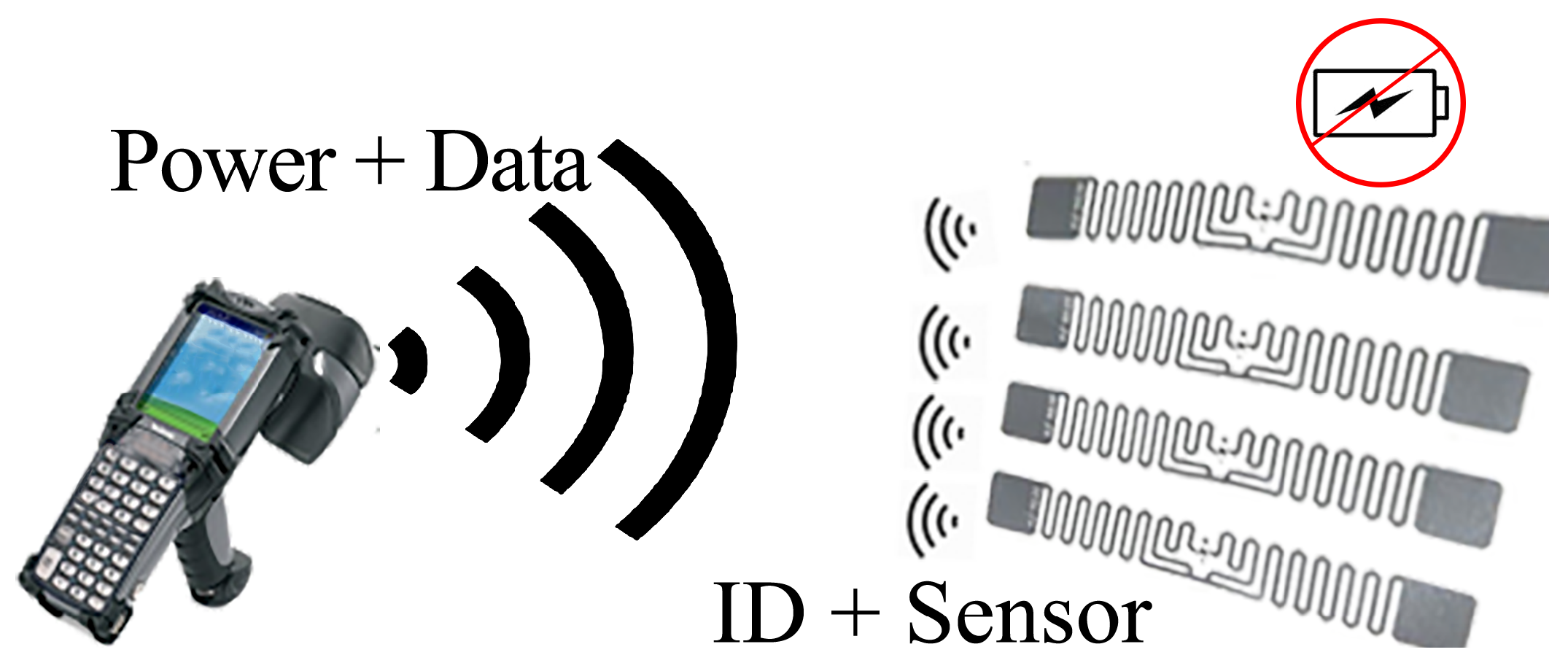

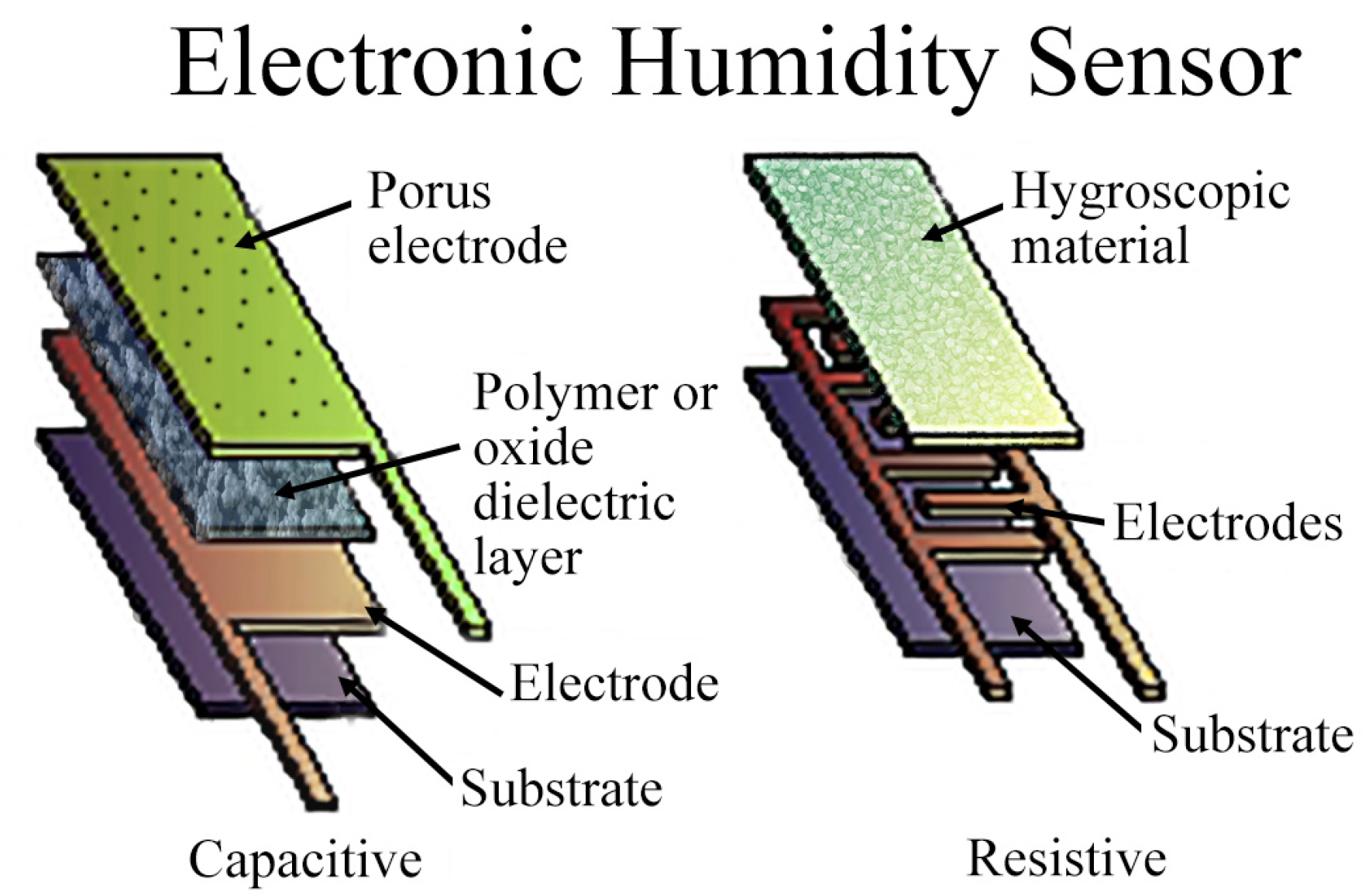
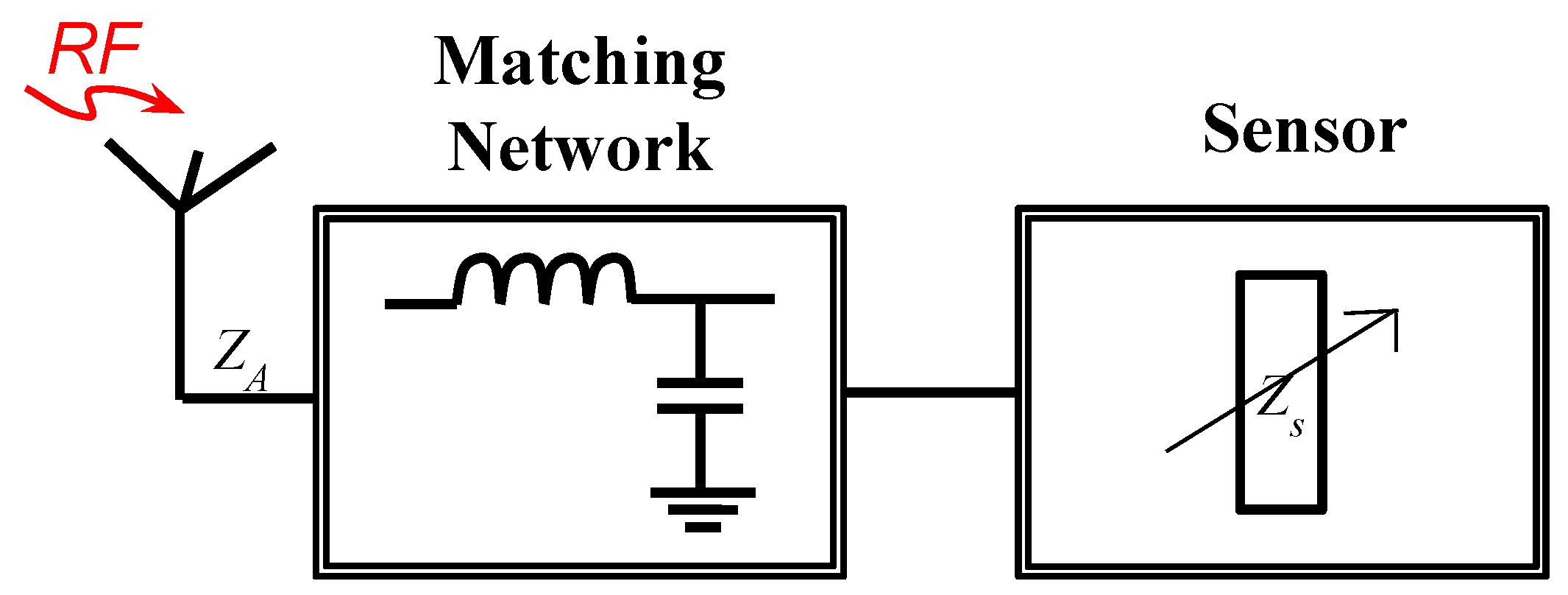
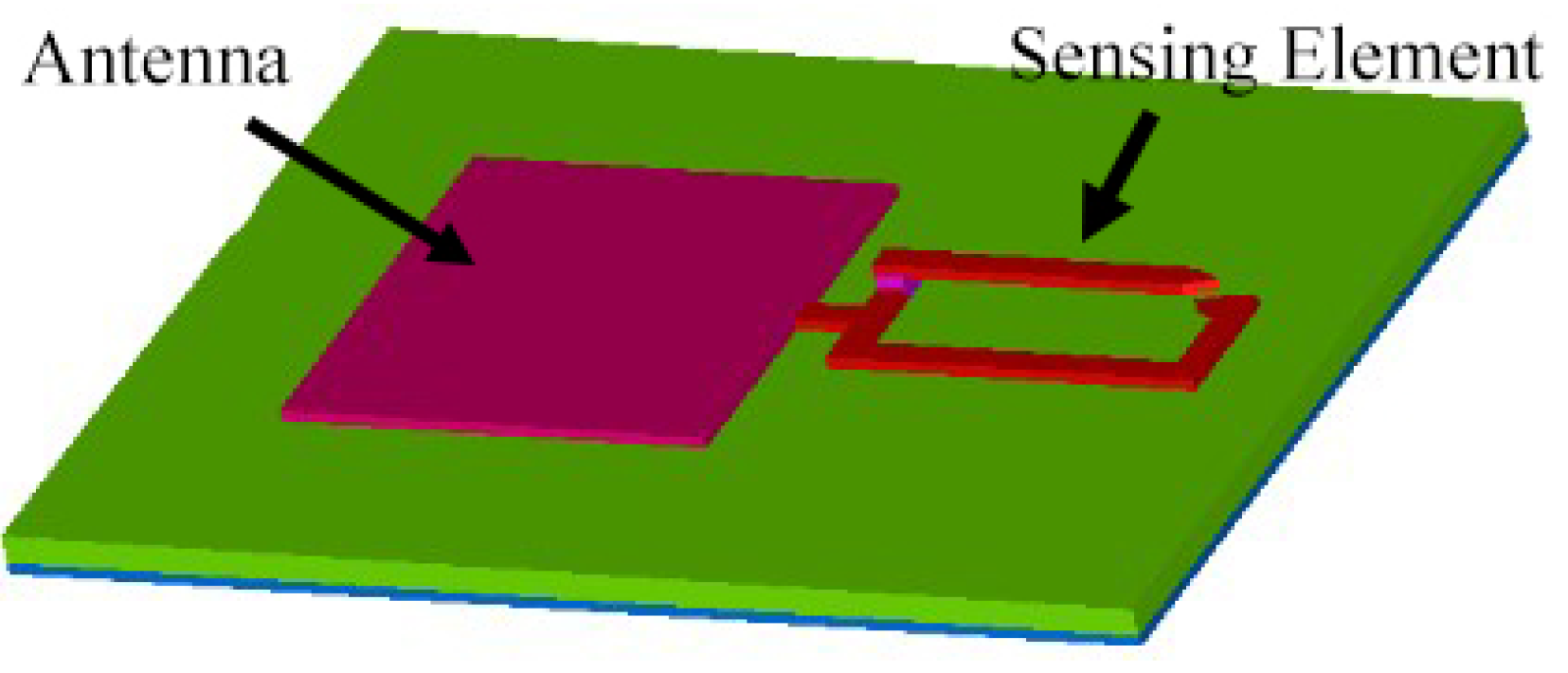

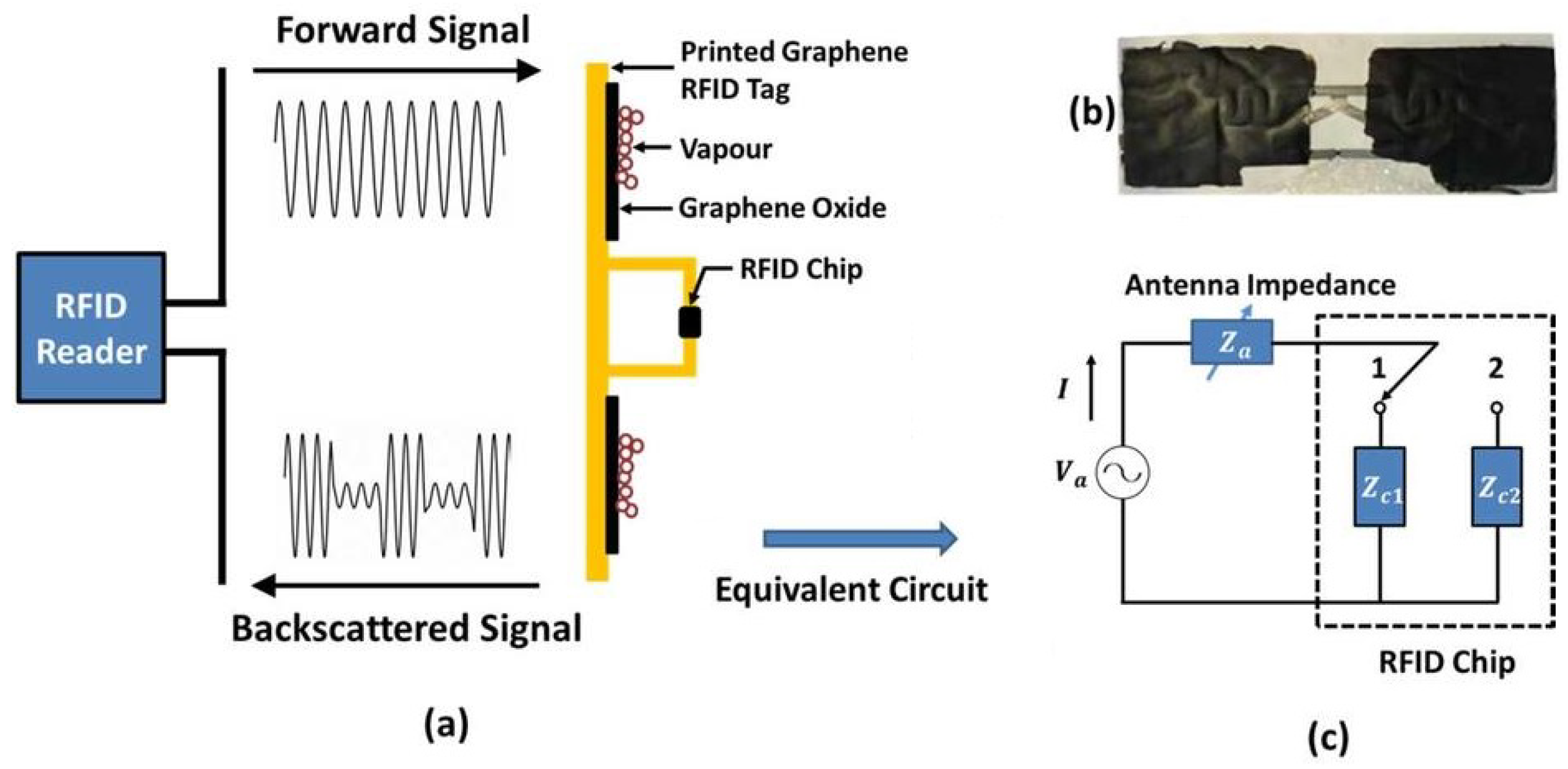
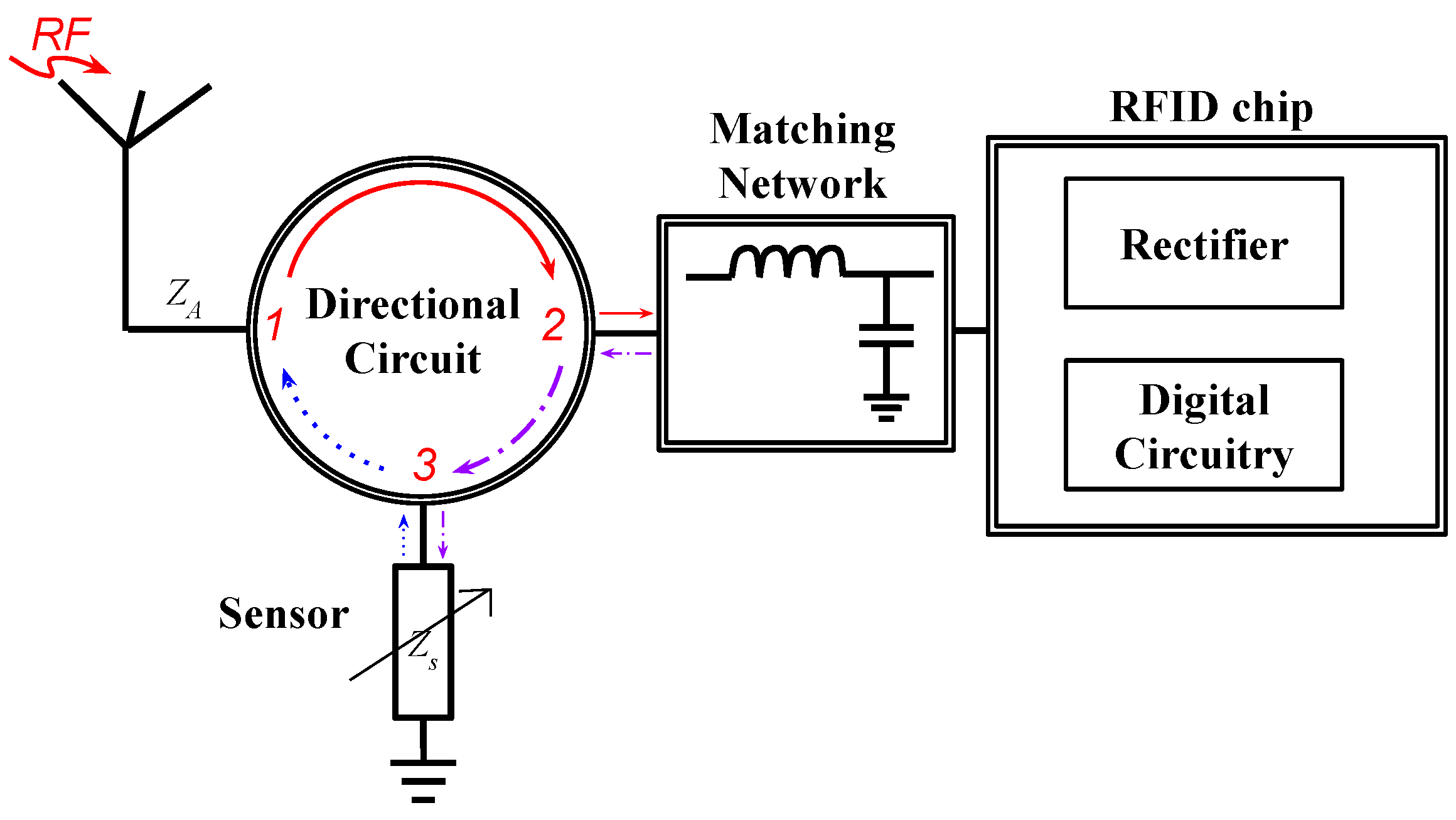
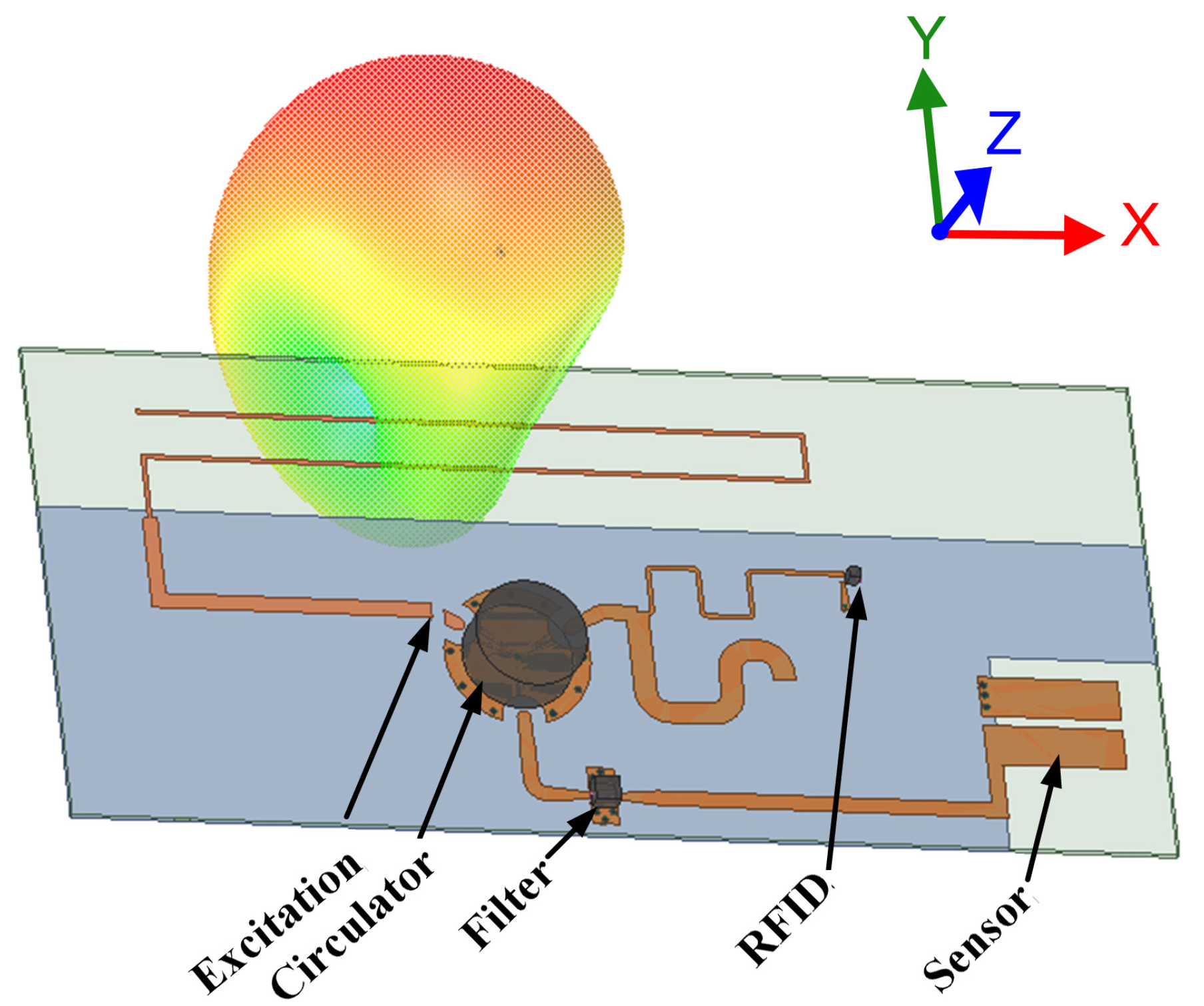
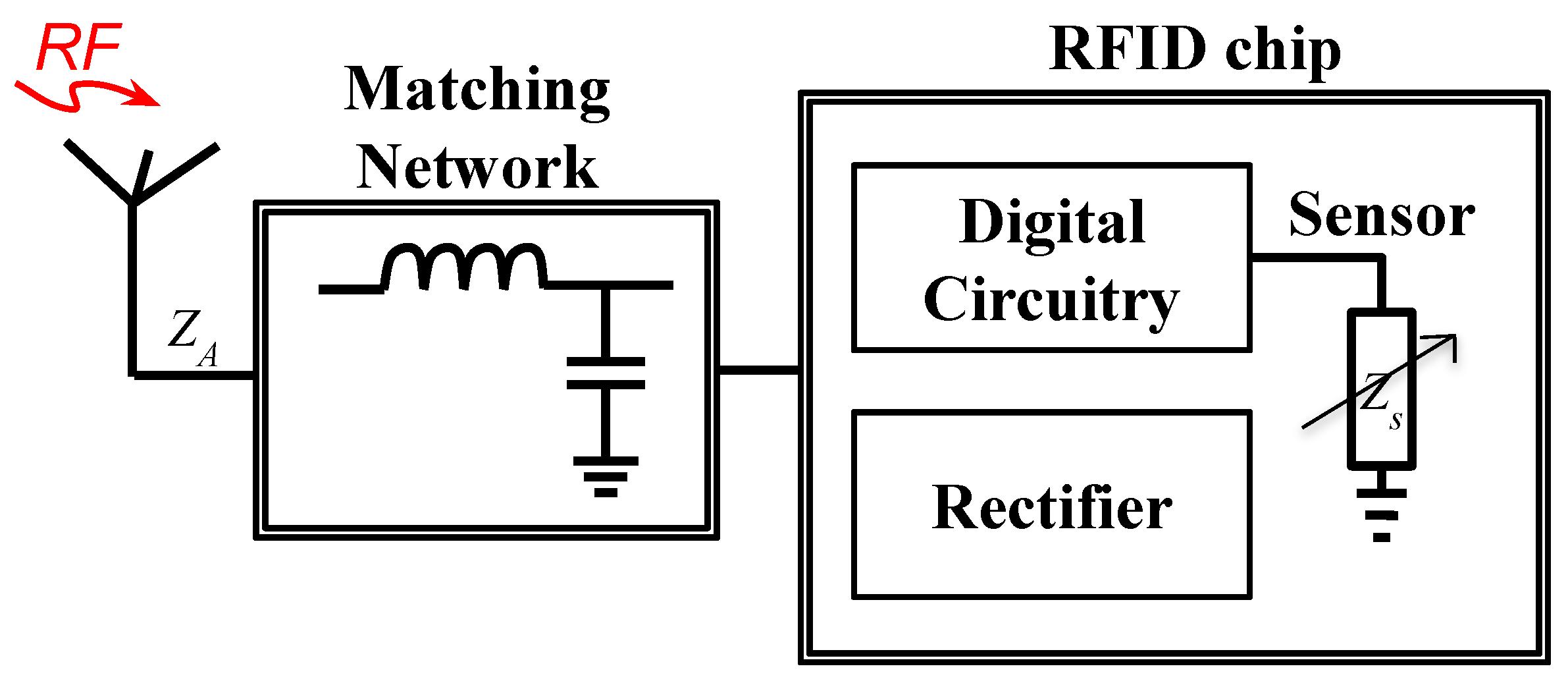

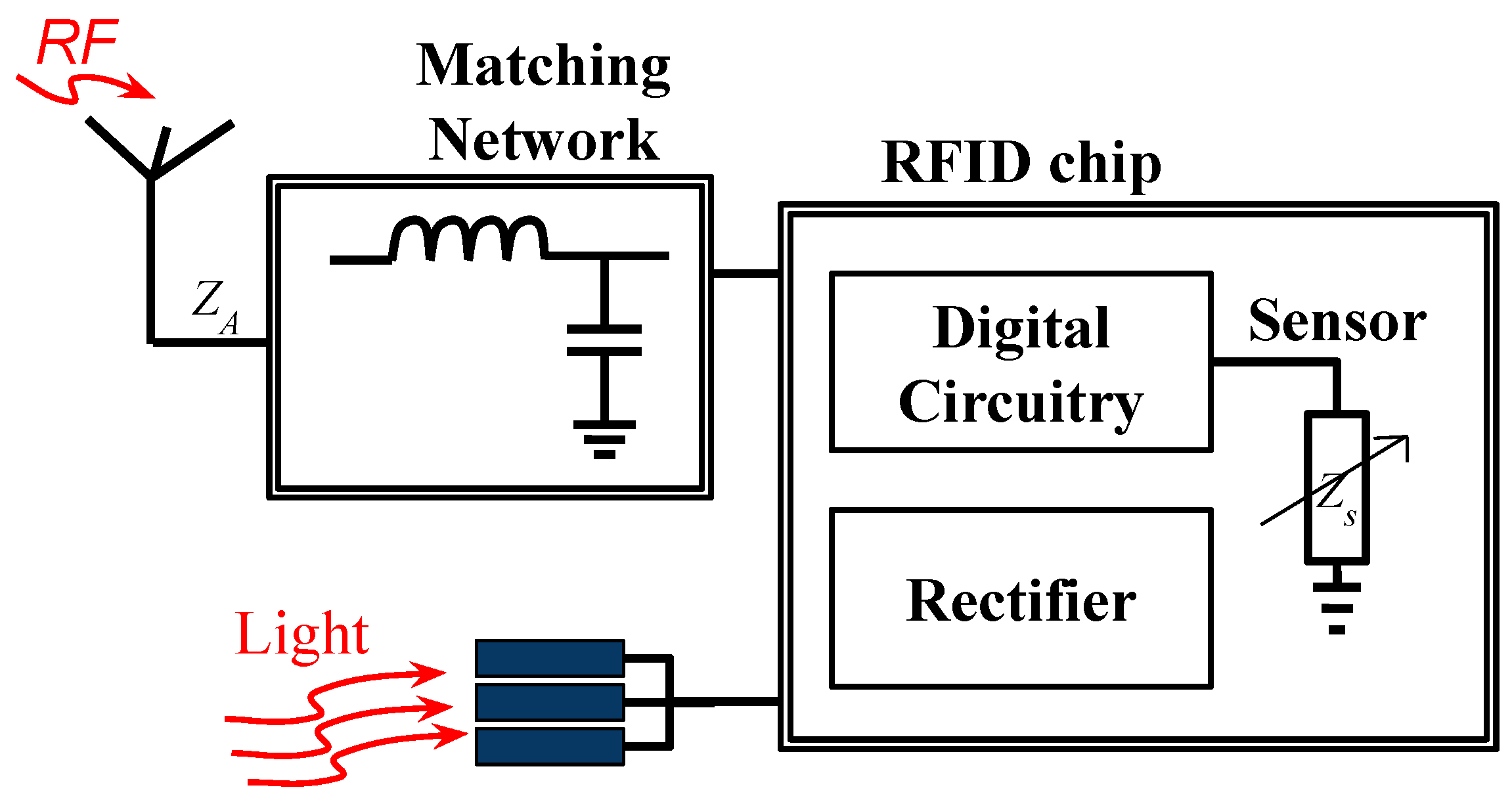
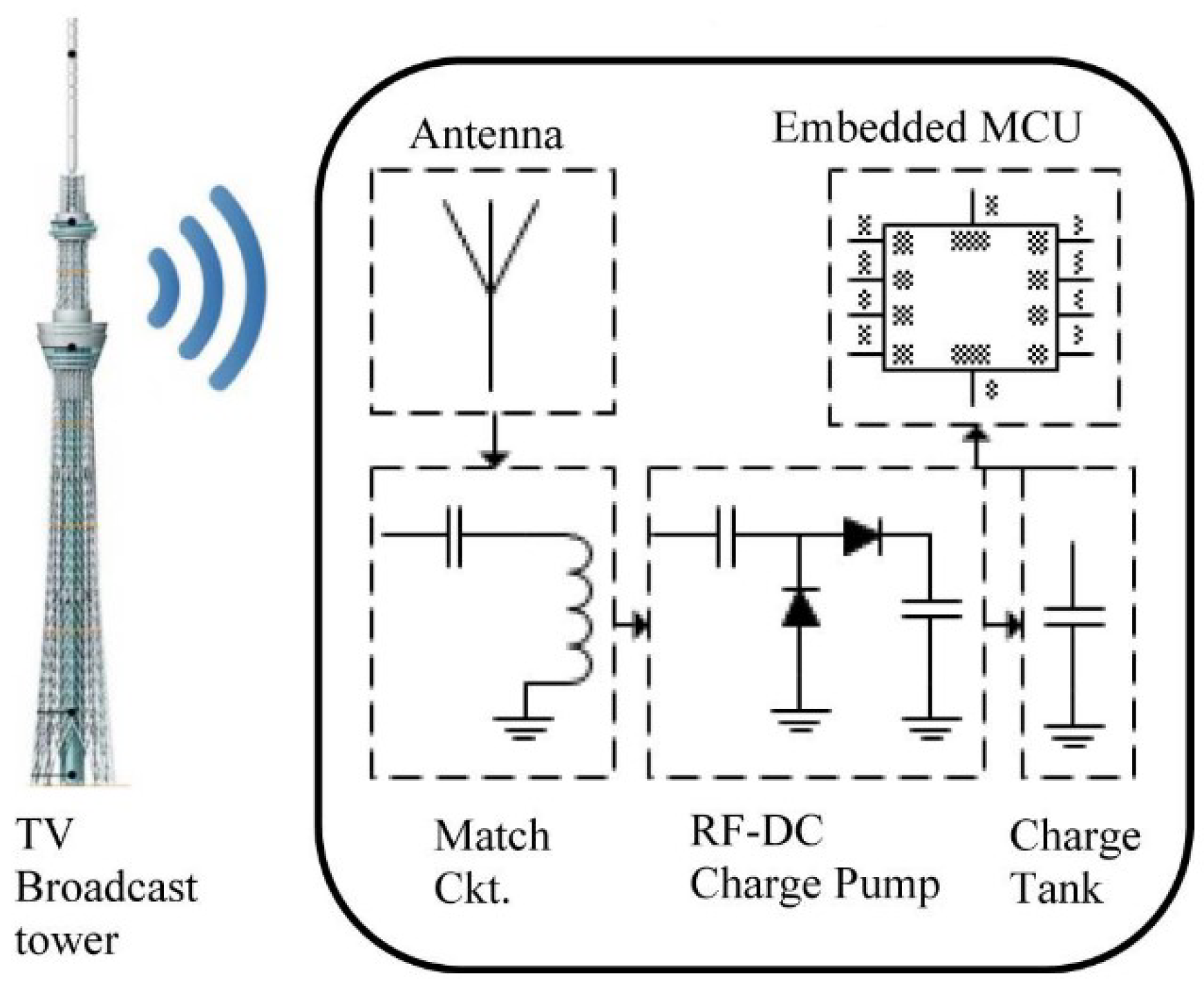
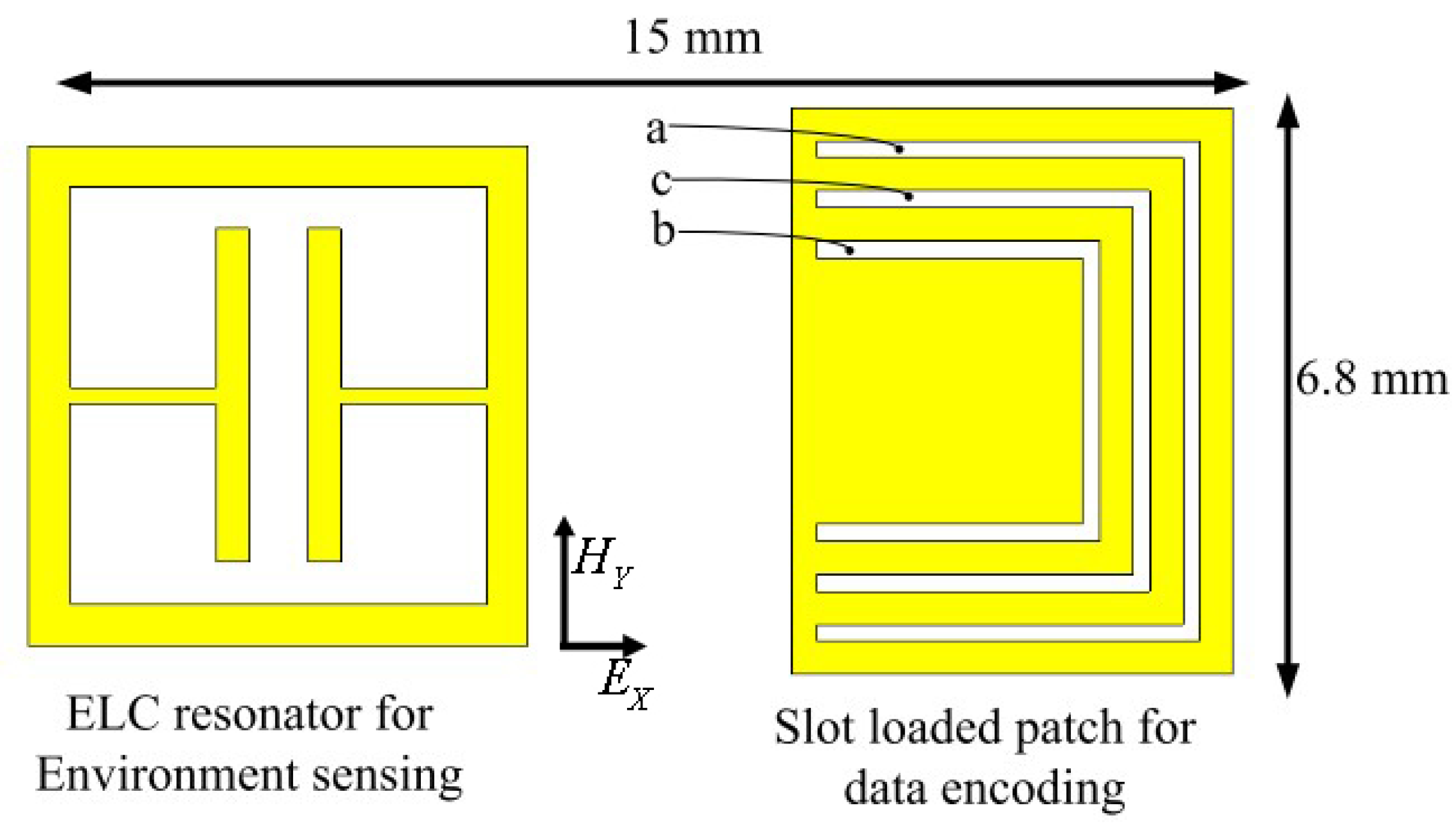
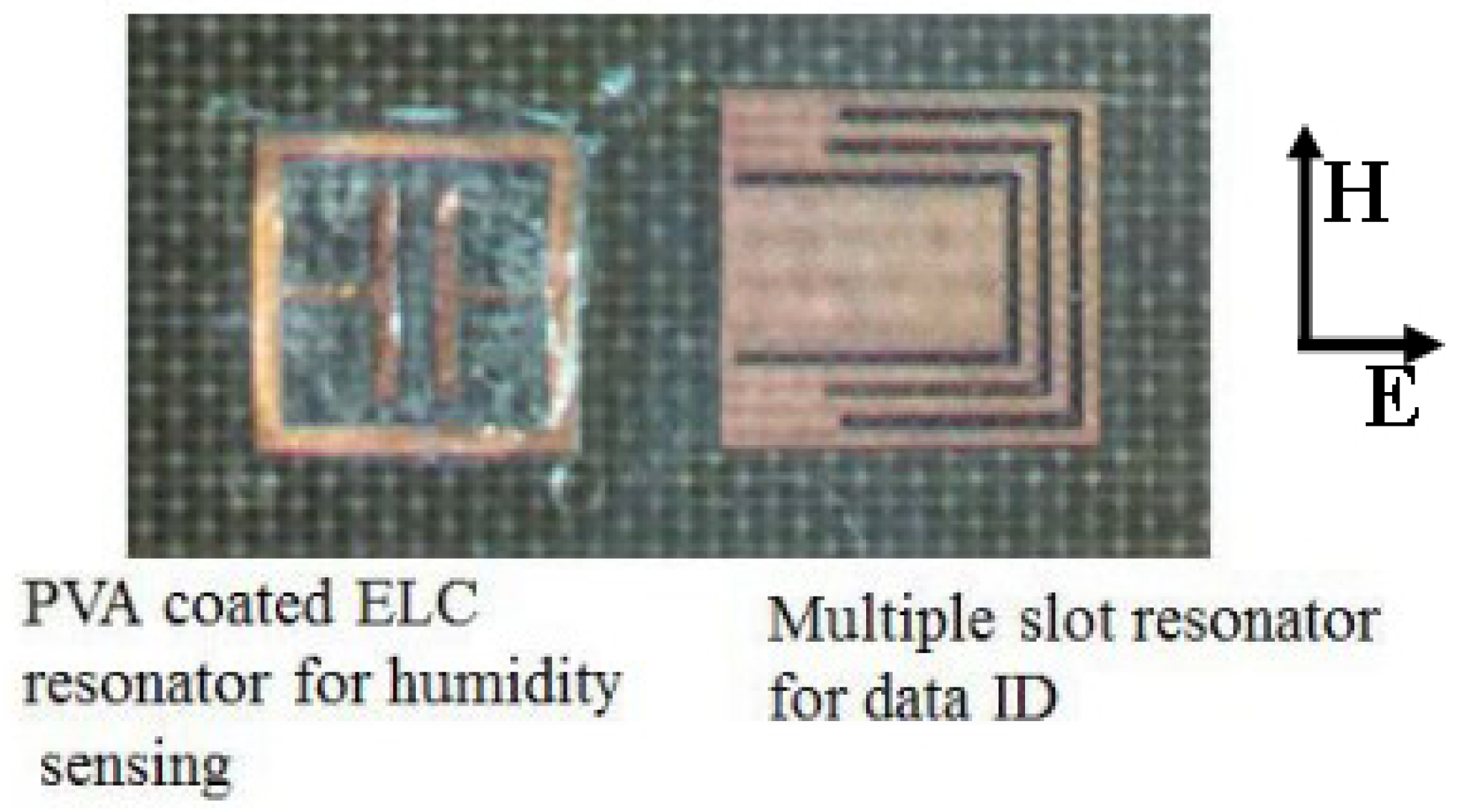

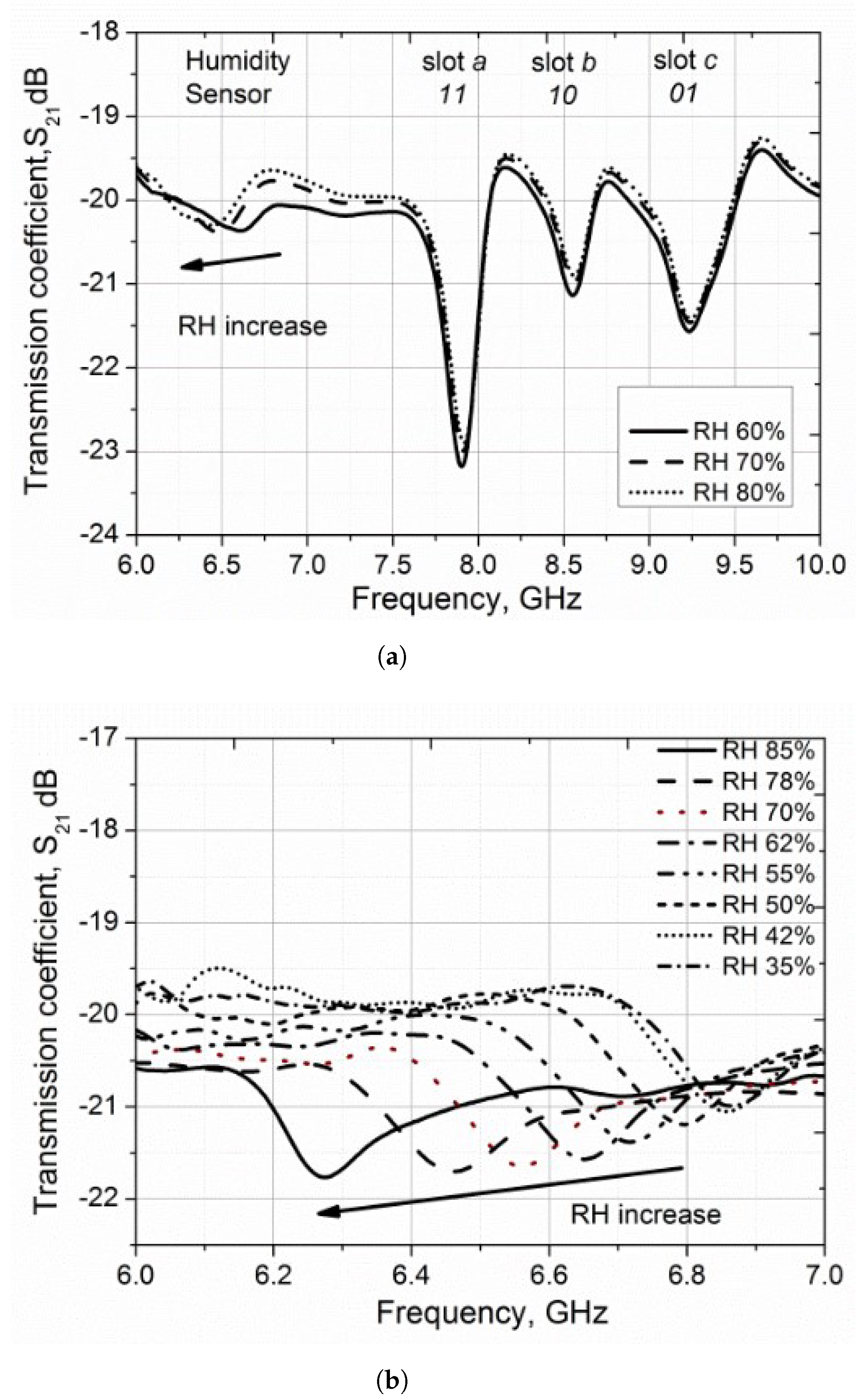
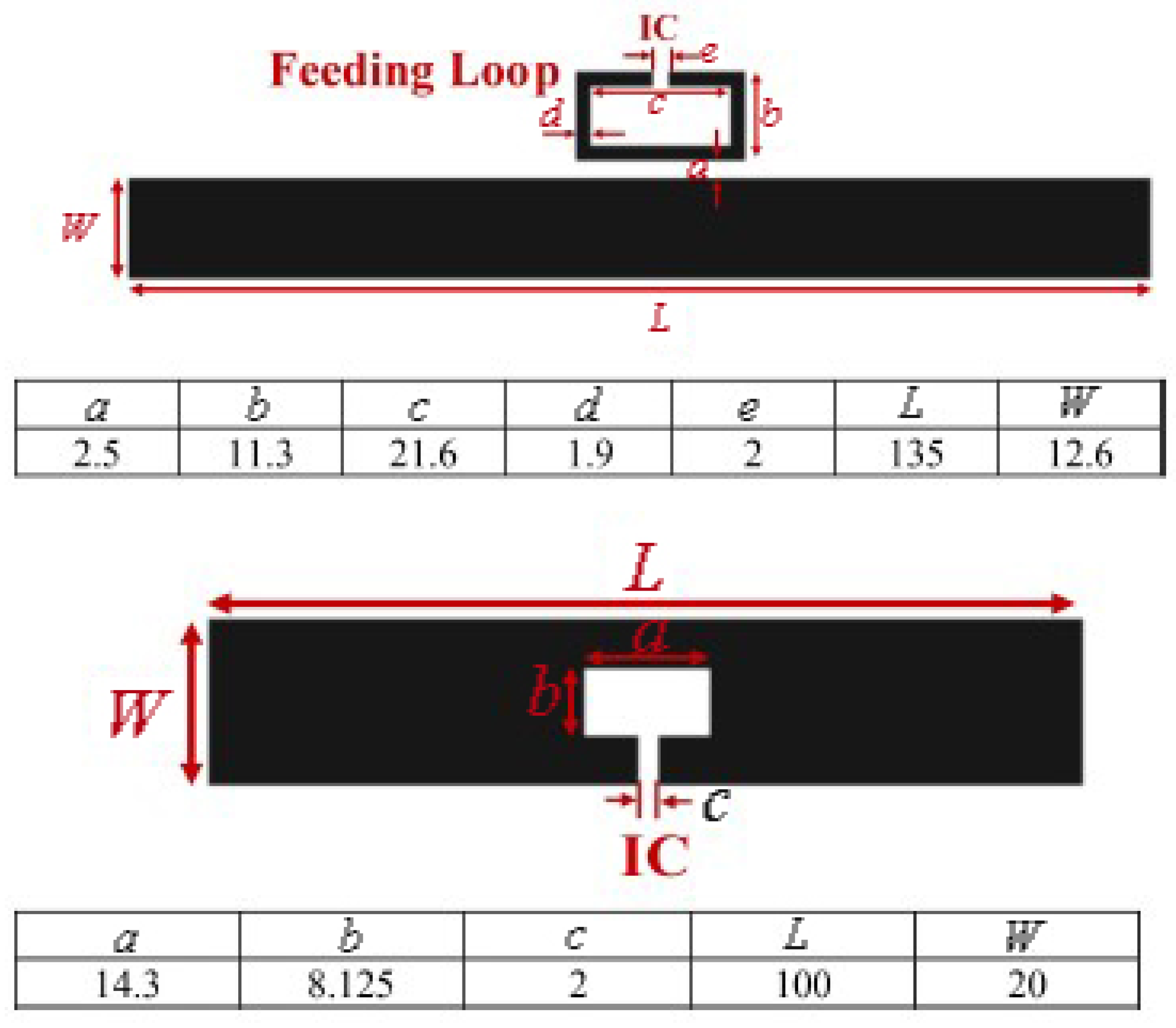
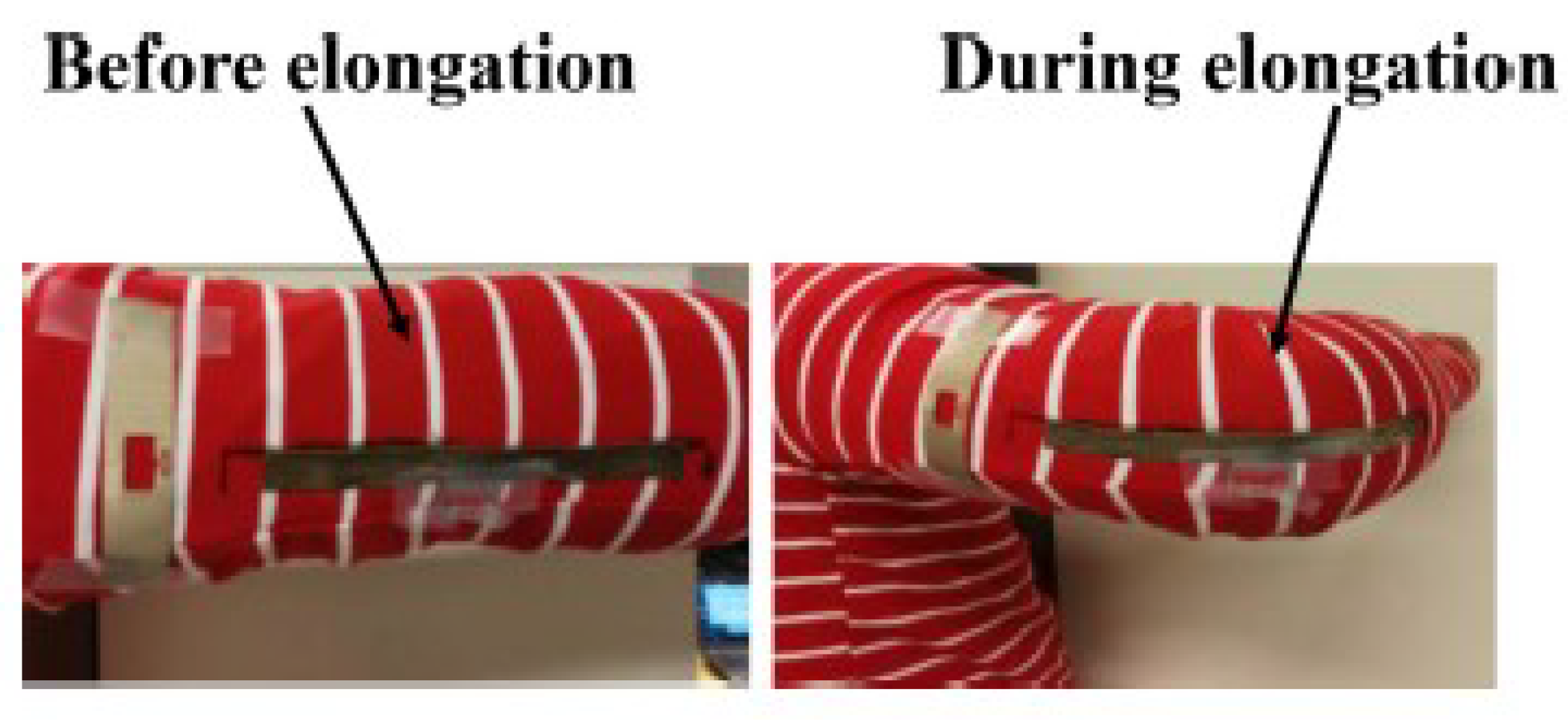
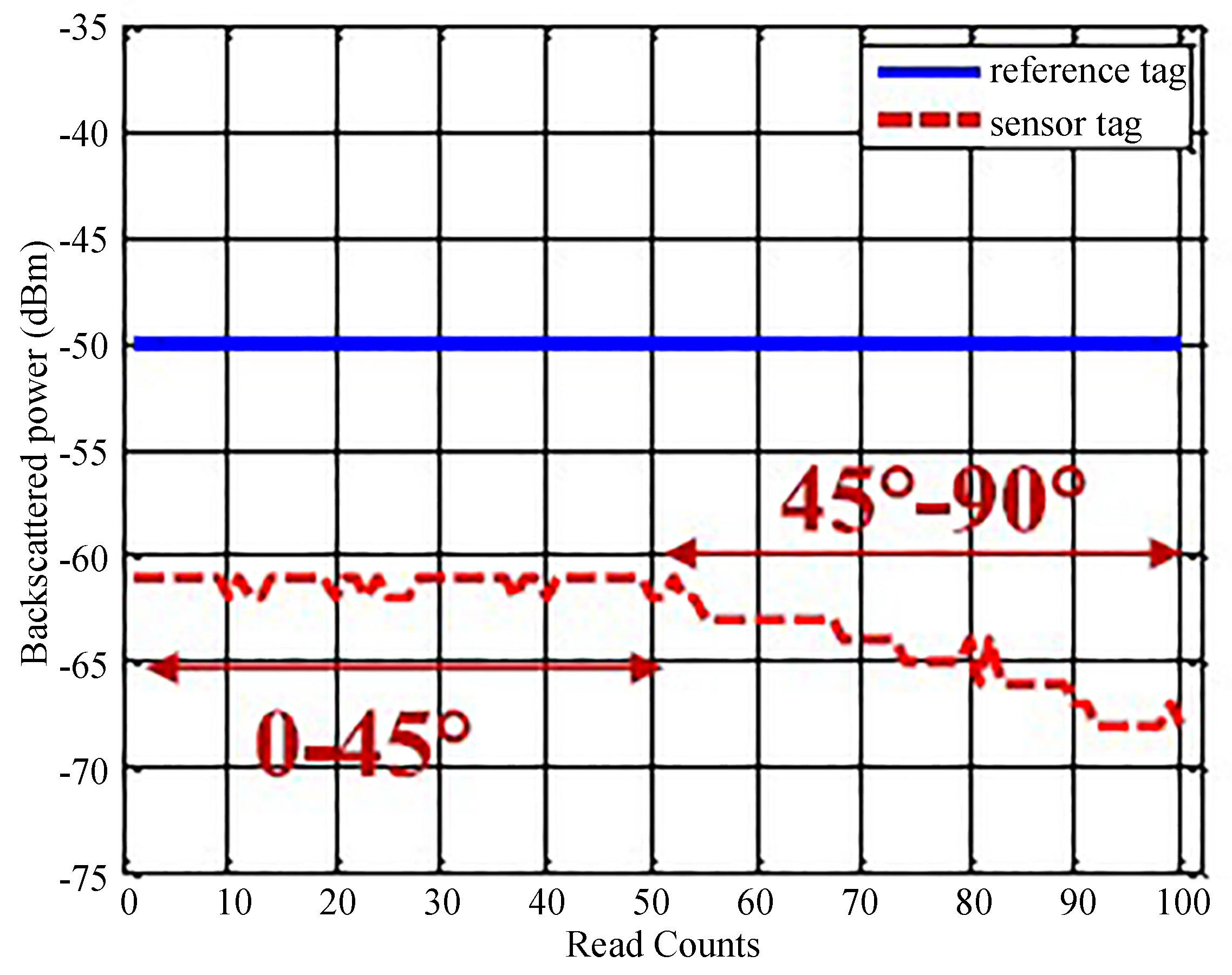
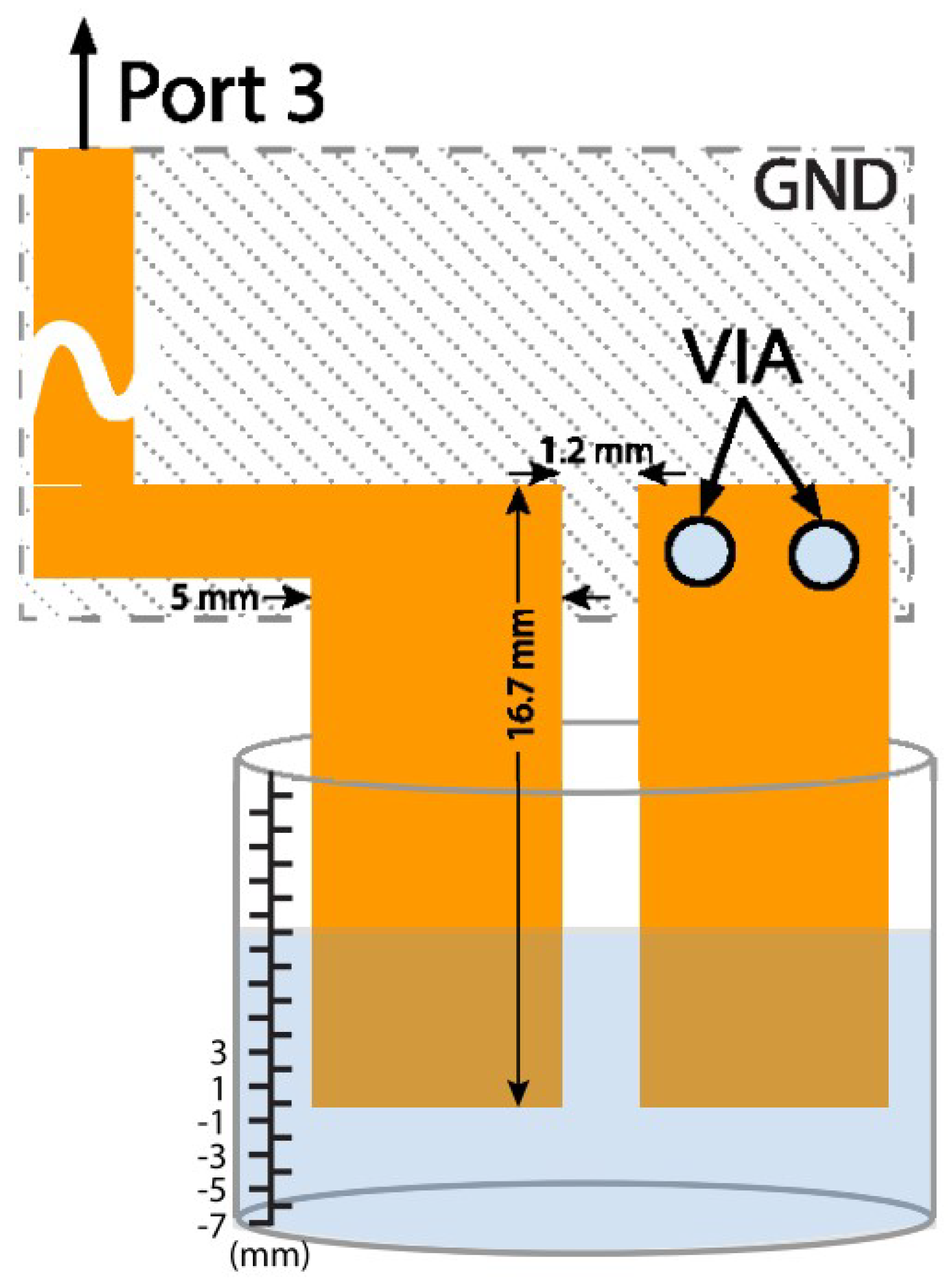


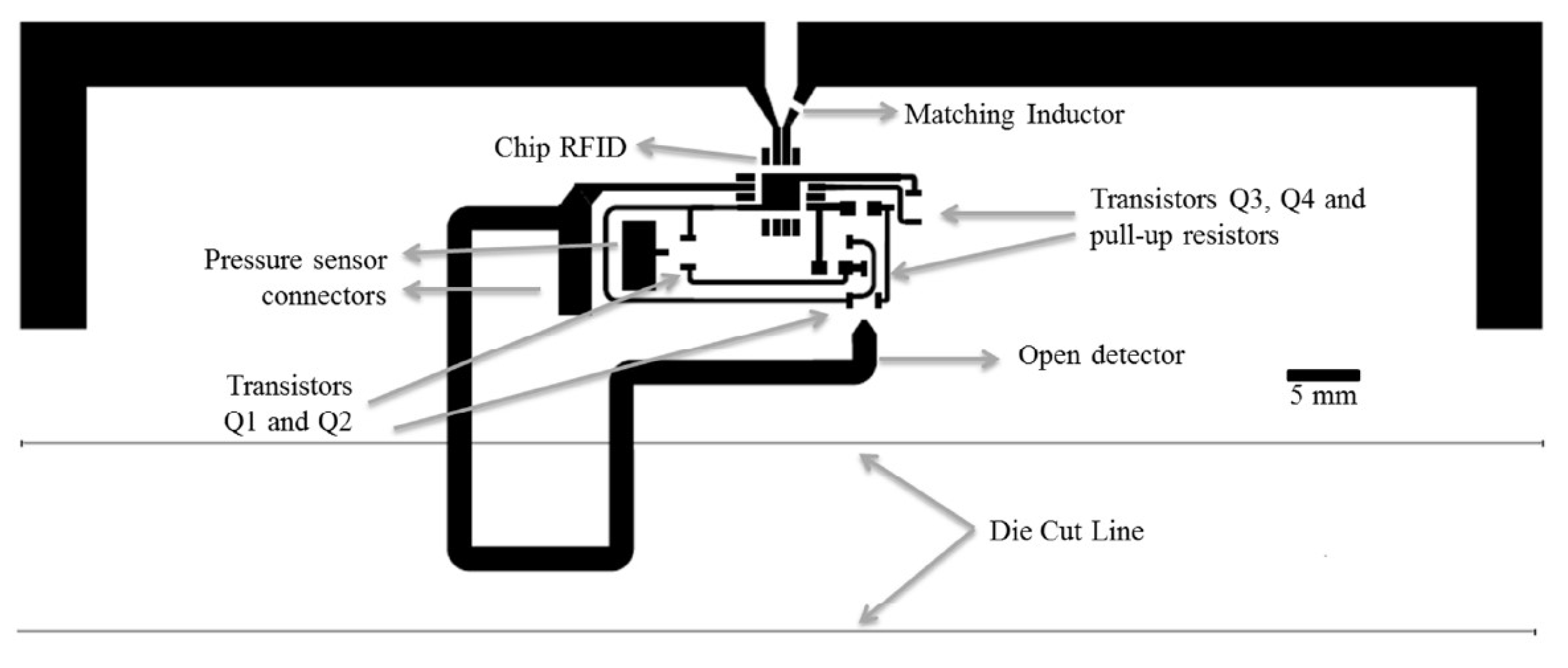
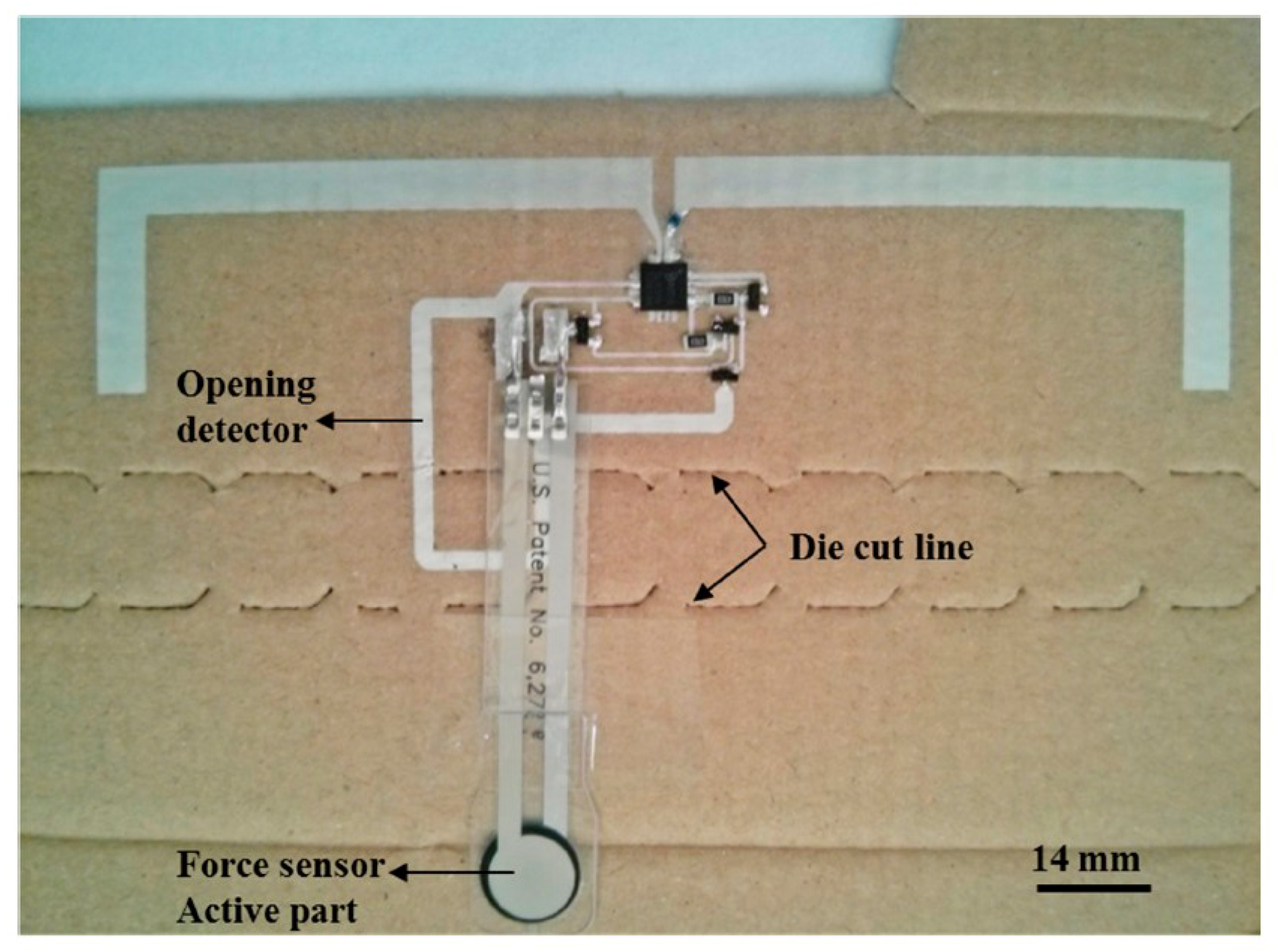
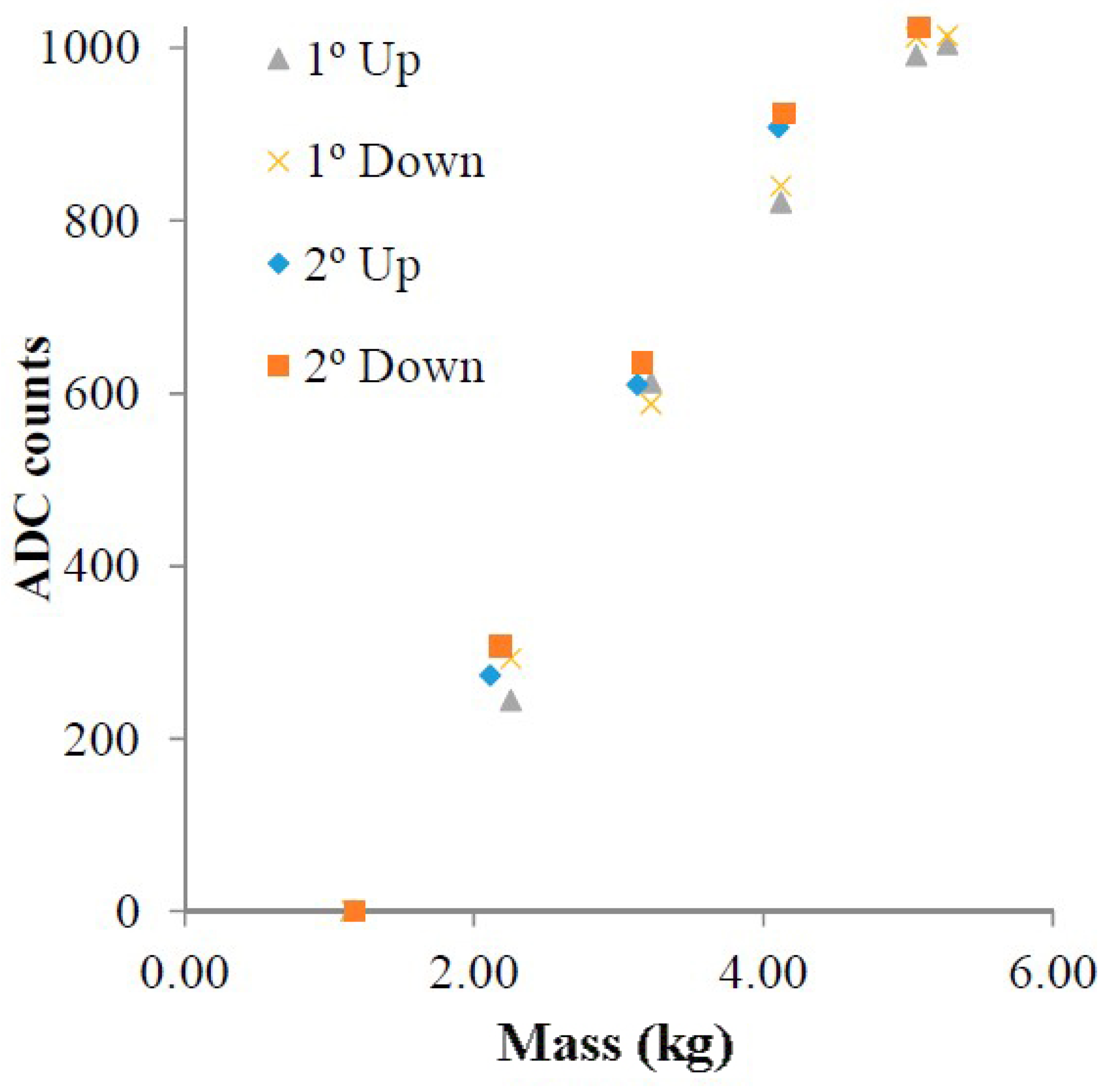

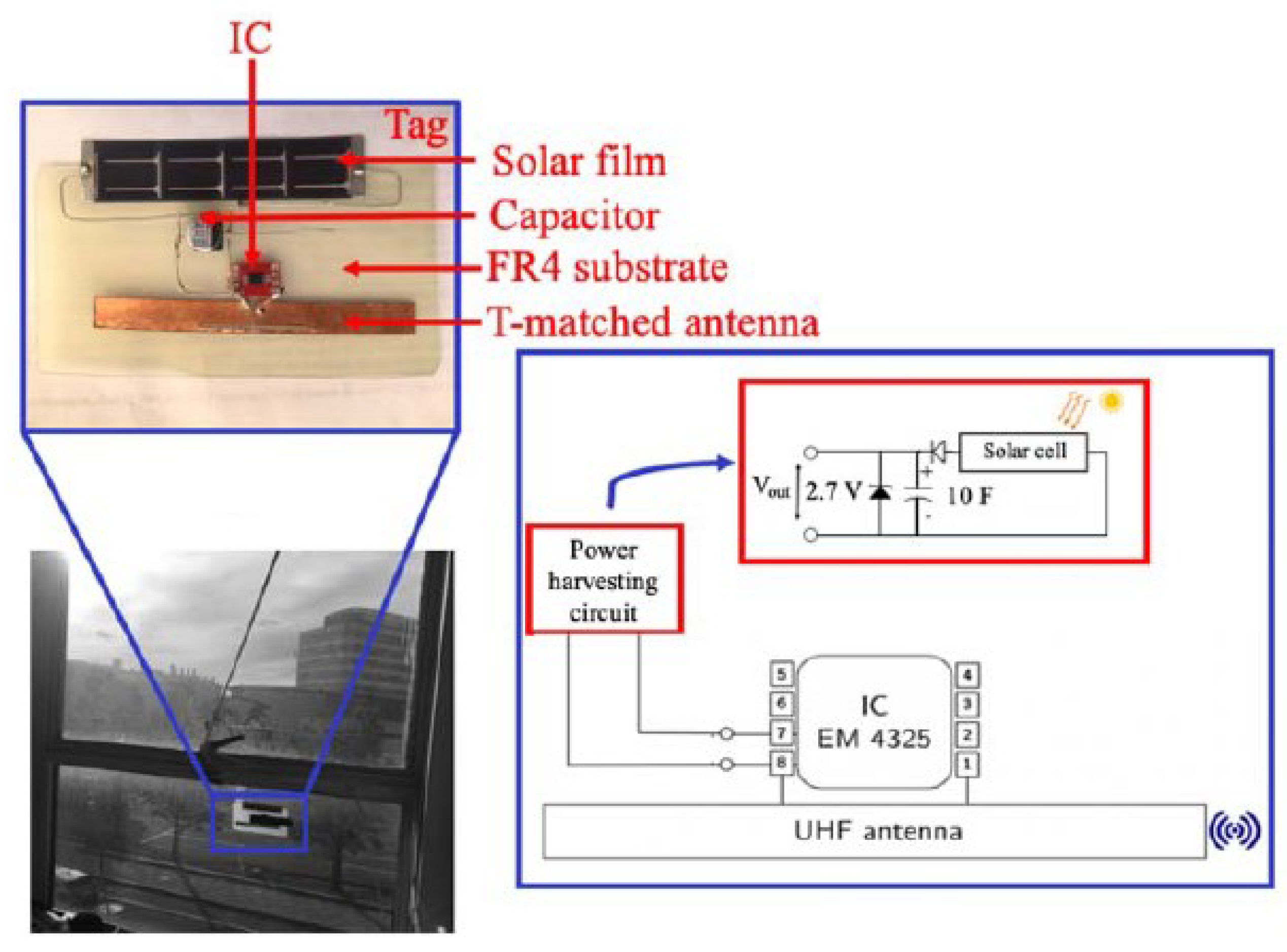
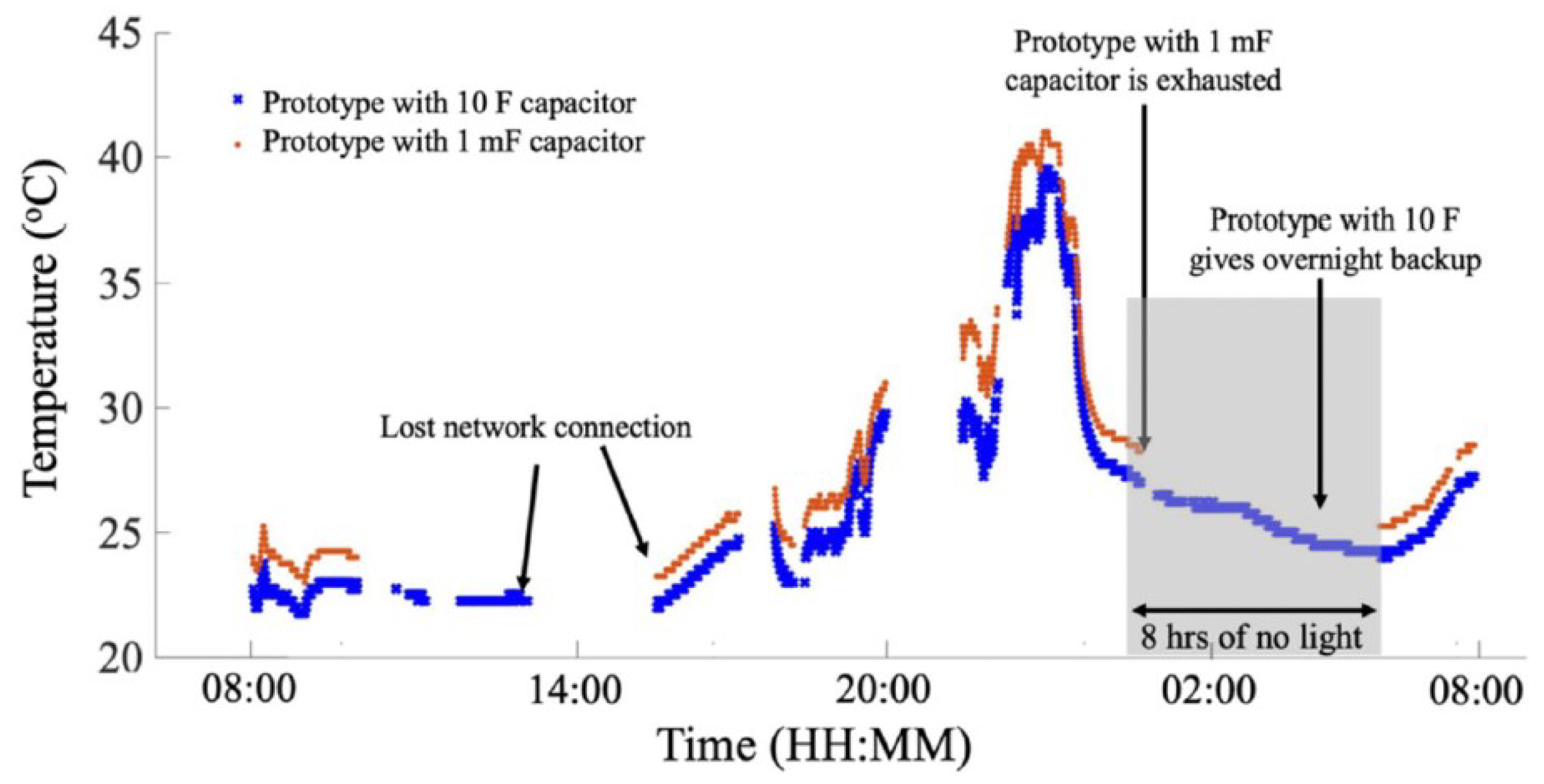
| Parameter | Chip-Less [8,29,95,103,104,105,106] | Antenna Resonance [33,34,35,36,37] | Multi-Port Architecture [39,40,41] | Digitally Integrated [42,43] | Ambient Energy Harvesting [20] |
|---|---|---|---|---|---|
| Cost | Very Low | Low | Moderate | Moderate | High |
| Complexity | Very low | Moderate | Low | Low | Moderate |
| Bandwidth required | ∼MHz | ∼MHz | ∼kHz | ∼kHz | ∼kHz |
| Anti-collision | No | Yes | Yes | Yes | Yes |
| Dense deployment | No | Yes | Yes | Yes | Yes |
| Range (m) | 2–30 | 3–5 | 7–10 | 1–2 | 5–10 |
Publisher’s Note: MDPI stays neutral with regard to jurisdictional claims in published maps and institutional affiliations. |
© 2021 by the authors. Licensee MDPI, Basel, Switzerland. This article is an open access article distributed under the terms and conditions of the Creative Commons Attribution (CC BY) license (https://creativecommons.org/licenses/by/4.0/).
Share and Cite
Khalid, N.; Mirzavand, R.; Iyer, A.K. A Survey on Battery-Less RFID-Based Wireless Sensors. Micromachines 2021, 12, 819. https://doi.org/10.3390/mi12070819
Khalid N, Mirzavand R, Iyer AK. A Survey on Battery-Less RFID-Based Wireless Sensors. Micromachines. 2021; 12(7):819. https://doi.org/10.3390/mi12070819
Chicago/Turabian StyleKhalid, Nabil, Rashid Mirzavand, and Ashwin K. Iyer. 2021. "A Survey on Battery-Less RFID-Based Wireless Sensors" Micromachines 12, no. 7: 819. https://doi.org/10.3390/mi12070819
APA StyleKhalid, N., Mirzavand, R., & Iyer, A. K. (2021). A Survey on Battery-Less RFID-Based Wireless Sensors. Micromachines, 12(7), 819. https://doi.org/10.3390/mi12070819







